#there’s a certain significant plot addition that was made to the show between end of next semester and this one
Explore tagged Tumblr posts
Text
my college does a play festival every spring where the plays students wrote for class in the fall get put on by students, and i have a bunch of friends who took that class with me and wrote great stuff,
and i just saw the one i was most looking forward to and. my brain is buzzing at 100 miles an hour. i can’t believe they pulled it off that well. the guy playing the lead memorized his lines, when we all only had a week between getting our actors and putting these on. that’s insane. and the rest of the actors and the directing and the way they transitioned between scenes so seamlessly and the WRITING and AAAAAHHH
#there’s a certain significant plot addition that was made to the show between end of next semester and this one#which i found out about in advance#and with that in mind when a certain character offhandly mentioned a relative that did not exist in the earlier versions#I immediately went ‘oh. i know what you will facilitate. i know where this is going. yes. YES’#and it fucking did!!! and it worked so well - the chemistry was so good - and. god.#the friend who wrote it doesn’t have tumblr so he won’t see this but i need to him to know he is so talented#and the guy who directed it also acted in some of the other plays and he’s really really good too#he’s also in the hamlet production I’m in (as horatio) - a bunch of hamlet people have been in the plays actually (not that surprising tbh)#so many talented people that i get the chance to know. i’m so lucky.
5 notes
·
View notes
Note
do u think sephiroths redemption arc is possible?
(Spoilers & wall of text alert)
Sure, why not, anything is possible. Currently, only two things are certain. One, despite fan backlash, Square Enix continues to take creative liberties. Second, regardless of what SE does, some fans will be upset.
For better or worse, SE's handling of the Remake in this regard leaves plenty of room for a 180-degree turn on Sephiroth's case. The character's portrayal has steadily shifted since the original, which appears to have served the purpose of painting him in a sympathetic light. It begs a question: to what end? Crisis Core, Ever Crisis, and FFVII Rebirth all depict Sephiroth as a decent person, with Rebirth showing him influenced by Jenova during the Nibelheim massacre (as discussed here). Here hardcore fans like to bring up old Ultimania publications, citing that Sephiroth's will overpowers that of Jenova after falling into the Lifestream and learning everything there is to know about the Meteor/Cetra/Jenova. While how SE handles that episode in the Remake remains to be seen, it's worth noting that official lore is neither immutable nor free of contradictions on a variety of details, including seemingly important plot beats like romantic lines. Additionally, certain details diverge over the course of compilation. As a result, we've already seen SE absolve AVALANCHE as an eco-terrorist organization by shifting the blame to ShinRA in the remake. They've made changes to Rufus and President ShinRA's plotlines. We've seen them make extremely bold decisions regarding Gold Saucer that were unthinkable in the OG. Furthermore, the inclusion of the Whispers and the theme of "Changing the Fate" demonstrate SE's willingness to take drastic and controversial steps, sometimes diverging significantly from the original material. The point is, developers' previous statements aren't set in stone and are subject to change as FFVII project grows.
As previously stated, SE left some space for a turn, most likely on purpose, if they decide to take a risk. The Rebirth already explores the idea of Sephiroth as little more than a passenger after leaving the mansion. In addition, the entries on Jenova monsters we fight in parts one and two sufficiently expand on the scope of Jenova's mind-interfering abilities, which may allude to Jenova's larger role in the Remake. When combined with the Temple of Ancients hologram and snippets from Gast's journal Sephiroth quotes, it could indicate that Jenova has been "awake" and out of slumber since its discovery at the dig site, potentially manipulating Gast and the team behind the Jenova Project.
Therefore, the groundwork for introducing a villain more significant than Sephiroth may already be in place. Shifting the focus away from him and toward an eldritch cosmic terror should suffice, as the ambiguity about who is in control has already existed since the original script. The Nibelheim sequence from Rebirth played a role in this, as did the infamous ore/watashi pronoun switch. And despite appearing to be totally distinct, the outcomes of Sephiroth's goals (consume Lifestream and travel to a new Planet to be god) eerily mirror those of Jenova (consume Lifestream and travel to a new Planet, presumably to once again consume it's Lifestream, rinse/repeat). Incidentally, in the Temple of Ancients, there is a hologram suggesting a connection between Jenova and The Goddess from LOVELESS, so one has to wonder just who Sephiroth is taking after with that "to become god" complex of his.
Another thing to consider is that throughout the compilation, traditional methods of defeating Jenovaroth simply did not work. Sephiroth/Jenova returned after their defeat in OG, and if you consider the Remake to be a sort of sequel (that is, if you subscribe to the Remake!Sephiroth=AC! Sephiroth theory), Jenovaroth returns after Advent Children as well. Battling him does not appear to yield results or break the "rebirth" cycle, so perhaps a different approach is required. (This ties in thematically with the tagline "defying destiny").
Redemption arcs are often perceived as leading to a "happily ever after," but they can take various forms beyond this common expectation. A character's redemption can involve self-sacrifice to overcome evil, collaborating with the protagonist to bring about change, and more. Combined with the previous remark about the futility of conventional fighting methods, perhaps the way to defeat Sephiroth/Jenova for good is somehow linked to his redemption of sorts. To break the parasitic bond between the two, or to quench and release the spirit's anger. In some ways, this is what Aerith does to Kadaj in Advent Children, and the latter's "essence", cleansed by Aerith's Great Gospel trick, rejoins the Lifestream. Equally, the Gi subplot somewhat parallels the Jenova/Sephiroth situation, so SE is likely to implement a comparable strategy for a secondary plotline.
Speaking about the latest material in the compilation, Ever Crisis quite poignantly brings up the topic of breaking the cycle of hatred.
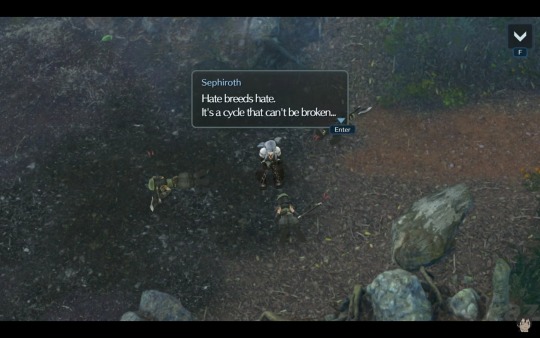
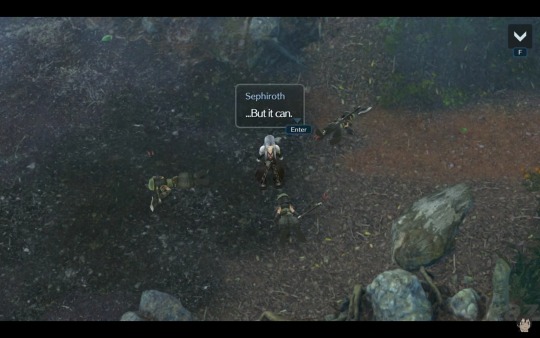
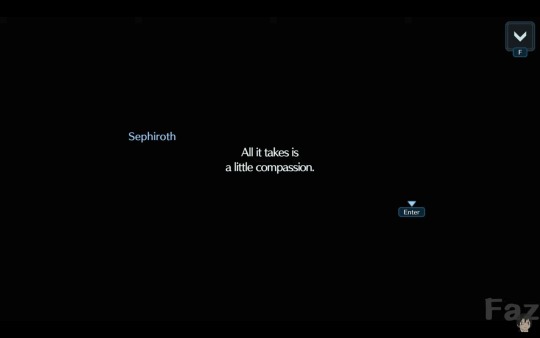
The latter pertains both Cloud & party (hatred toward Sephiroth, ShinRA), and Sephiroth himself in as much as OG painted him (hatred towards humanity for eradicating the Cetra and more). So perhaps the key to saving the world of FFVII is about showing compassion and acting out of mercy, not out of revenge.
Anyway, it is entirely speculative at this point.
Overall, a different role for Sephiroth should not be dismissed as a possibility as certain elements in the game suggest a potential twist related to Jenova. SE have proven that they care about their creative vision far more than about criticisms, so…no promises at the journey's end. Naturally, some groups of fans may strongly oppose SE if Sephiroth is sidelined or if significant alterations are made. On the other hand, there has been growing dissatisfaction since the first part of the Remake with Sephiroth being shoehorned as a boss fight so frequently that he becomes redundant as a "final big bad". While both perspectives are reasonable and offer valid insights into the situation, someone will still be outraged no matter what SE does.
From a personal standpoint, I maintain an open-minded approach. If Sephiroth remains a villain, that's fine. If he is revealed to have been Jenova's puppet all along, my world will not collapse. On the plus side, I'm excited to see Jenova play a bigger role. The entity is as fascinating as The Thing from the film, and the original failed to capitalize on all of its creepy potential. At the end of the day, it may be the case of familiarity breeding ambivalence: the game has gotten so old that I won't mind a new twist, even if all characters end up dancing to a hip-hop tune in the end. On that note, in a recent interview, one of the developers stated that they are planning the ending with characters being happy in mind, which is what I'd like to see after 20+ years. For the characters to discover happiness and peace. This includes Sephiroth. Finding a peaceful way to break free from Jenova and his anger once and for all.
���� @pen-and-umbra
23 notes
·
View notes
Text
Spire Teleportation Mishaps
Figured I'd put together a list of some of the more common potential causes as inspiration for future use! It's an easy trope for tossing folk into your setting and having them be Actually Stranded for at least a little while, and can serve as fodder for additional complications besides.
(This is mostly for my own reference, but feel free to DM me if any of these capture your imagination and you want me to put together a starter. ^_^)
.
Vector wyrms:
These are creatures that are drawn to the energy of connections between planes and try to eat anything traveling through. The Spire has had one or two infestations over the years.
Most of the folk who can enact interdimensional travel from the Spire can react in time to avoid getting eaten, but this often involves reaching for the metaphysically "closest" destination, and can also involve arriving with quite a bit of speed. (Or, rather, a lack of necessary motion; a failure to completely sync up with the motion of a given planetary body.)
Injuries from the landing are pretty common, and the emergency spellwork during the save itself usually isn’t gentle, either.
This can be just the messed up teleportation, or the wyrm could get pulled through into the new setting as well and everyone would have to deal with a cranky void critter!
.
Minor disruptions:
On a less extreme front than the vector wyrms, sometimes Shit Happens and there’s a magic surge, or one of the Spire’s less scrupulous inhabitants decides to mess with folk, or the target destination is protected with a redirection spell, or somebody disrupts the casting at the last moment, etc.
Due to his epilepsy, Diamond builds most of his teleportation spells with a strict pass/fail structure. Either he completely finishes casting the spell and successfully enacts the final instantaneous 'trigger', or he doesn't trigger it and the spell fizzles harmlessly.
But other less cautious mages can be more susceptible to this, and it doesn't protect against active outside redirection and such.
.
Plain old mistakes:
If Diamond (or other teleporting party) doesn’t have a pre-made anchor to target, the spell can literally just misfire.
This is pretty rare – otherwise teleportation wouldn't be trusted as a frequent mode of travel! But it does happen.
In Diamond's case, it's more likely if he’s rushed (e.g. fleeing from something), unwell, or burnt out from too much casting.
.
Spire connections:
In much the same way that the Spire itself sometimes draws in (seemingly) random people from random worlds, it does sometimes send its inhabitants to places, too.
This one is literally, in-universely narratively convenient. It absolutely tends to involve showing up in some moment when the arrival will help or disrupt something significant.
People being trapped, in danger, or feeling like they’re short on options or don't have a safe place to go are pretty common triggers.
The other direction of “the Spire needs something these people or this world could theoretically provide” happens, too!
On the other end of the intensity spectrum, sometimes literally all that prompts it is dramatic irony
.
Banishment:
Cueing off the D&D spell: Some enemy caster (or Clemcy in a bad mood sdlghdf) decides to planeshift someone to get them out of the way.
.
Losing a tail:
During certain plot events, Spire casters might be forced to hop through a fairly rapid sequence of teleportations to different realms in an effort to keep someone from tracking directly back to the Spire.
Needless to say it’s a bit draining, and can result in mistakes -- or in the caster simply running out of energy and being forced to rest before they'd intended!
.
Malfunctioning equipment:
Some of the Spire’s engineers are a little, uh, reckless. Sometimes folk get caught in the crossfire. :')
.
Others to be added as I think of them!
#queue#wishlist#plot bunnies#wishlist: general#starter call#plotting#details#details: the Spire#details: Diamond#the spire#Diamond
4 notes
·
View notes
Text
Collusion - The Hidden Side of Sports
Connor Phipps (48258868)
Discussion: Thursday 8pm
The term "collusion" refers to covert collaboration between two or more people or groups for a wrongous or criminal goal. Business, politics, and sports are just a few of the settings where collusion can happen. Collusion can have detrimental effects on customers, the economy, and society, despite the fact that it is frequently difficult to detect.
Collusion can also happen in sports, for instance when team owners work together to set salary caps or restrict player mobility. This kind of collaboration can be detrimental to both the participants and the spectators who pay to see them compete. In politics, collusion can happen when people or organizations work together covertly to influence elections or gain an unfair advantage.
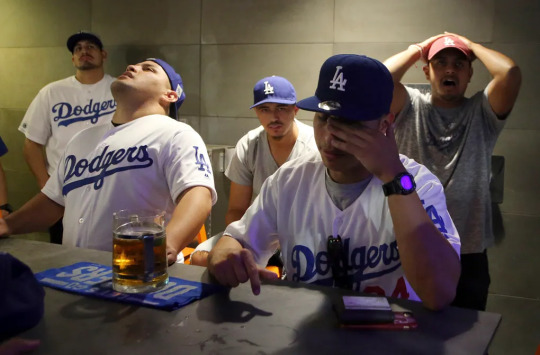
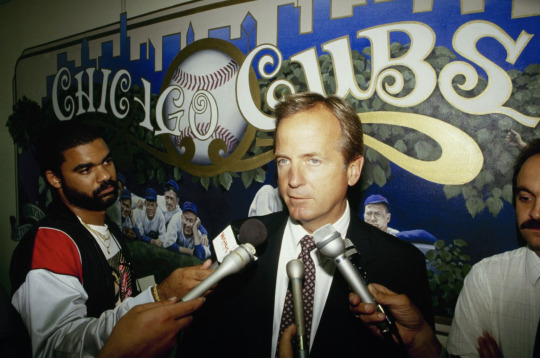
As a frequent viewer of Major League Baseball, I have always admired the sport for its spirit of competition and the sense of fandom it produces. But I've been upset and disillusioned about the league's collusion issue. In addition to harming the players who are not fairly compensated for their skills, this also distorts the playing field and jeopardizes the integrity of the game. As a fan, I like to think that players' skill and effort on the field, not management's plotting behind the scenes, dictate the results of games. My faith in the sport's fairness is destroyed by collusion, and it is tougher for me to love it as much as I once did.
In the late 1990s and early 2000s, Major League Baseball (MLB) saw certain instances of collusion. Several organizations were charged with conspiring to reduce player pay at the time by deciding not to sign lucrative contracts with free agents.
An MLB player made an average of $1.07 million in 1995. It had barely climbed to $2.38 million by 2001. This was in spite of the fact that the league's earnings during that time period went from $1.9 billion in 1995 to $3.5 billion in 2001, a huge rise.

Figure 1: Team Revenues all in the millions

Figure 2: Player Revenues huge difference between team and player revenues

The MLB Players' Union filed a grievance against the league in 1998, alleging collusion amongst team owners. The union charged that teams were working together to avoid competing with one another for free-agent players, which was driving down wages. The dispute was arbitrated, and in 2000, the players were given $280 million in damages when the arbitrator found in favor of the players' union.
This collusion had significant results. Several gifted athletes failed to secure the contracts they merited, and some were forced to retire early or accept pay below what was fair. Teams with smaller payrolls were at a disadvantage relative to those with greater payrolls, which had an effect on the competitive balance of the league.
Overall, this example shows the real-world consequences of collusion in sports, including its impact on player salaries and the overall competitive balance of a league. It also highlights the importance of holding organizations accountable for engaging in collusion and ensuring that players are able to earn fair compensation for their skills and contributions to the sport.
Works cited
“MLB Collusion, Explained.” Google, Google, https://www.google.com/amp/s/www.sbnation.com/platform/amp/mlb/2018/1/18/16882650/mlb-collusion-offseason-free-agency-explainer.
“Baseball Strike in 1994-95 Began 25 Years Ago - MLB | NBC Sports.” Google, Google, https://www.google.com/amp/s/mlb.nbcsports.com/2019/08/12/baseball-strike-in-1994-95-began-25-years-ago/amp/.
Jablon, Robert. “LA Dodger Fans Face Heartbreaking Ending to Magical Year.” The Seattle Times, 1 Nov. 2017, www.seattletimes.com/news/la-baseball-fans-prepare-for-a-once-in-a-lifetime-moment.
Gaines, Cork. “CHART: MLB Salaries Had Largest Increase in 7 Years and This Is Just the Start.” Business Insider, 19 Dec. 2013, www.businessinsider.com/chart-mlb-salaries-had-largest-increase-in-7-years-and-this-is-just-the-start-2013-12.
---. “MLB Team Revenues Show the True Disparity Between the Haves and Have Nots.” Business Insider, 28 Mar. 2013, www.businessinsider.com/team-revenues-show-the-true-disparity-in-major-league-baseball-sports-chart-of-the-day-2013-3.
"Baseball Collusion: It's a Case of Suing the Bosses," by John Feinstein, The Washington Post, published on November 1, 1987.
"Collusion Case Splits Baseball Owners and Players," by Ross Newhan, The Los Angeles Times, published on January 14, 1990.
"Collusion Was the Dark Secret Behind Baseball's Free-Agent Chill," by Murray Chass, The New York Times, published on October 28, 1990.
Baseball Collusion: It's a Case of Suing the Bosses," by John Feinstein, The Washington Post, published on November 1, 1987.
3 notes
·
View notes
Text
Dead Apple Light Novel
Recently, I decided to buy LN 5, Dead Apple, purely because I’m a sucker for all of BSD’s light novels, so this post will revolve around what I took away from this novel.
Dead Apple is Canon
Since the story jumps around in the timeline a lot, I had originally thought that Dead Apple took place outside of canon (especially with Atsushi’s flashback).
However, a particular part of Asagiri’s afterword stuck out to me:
Now, allow me a moment to discuss some of the particulars of Dead Apple. Chronologically, the story takes place after the second season of the anime — in other words, after the war with the Guild, which puts Dead Apple somewhere between the ninth and tenth volumes of the manga.
The novel also ended up affecting the main story in numerous ways, and I’m sure this new experience will continue to influence my future work as well.
It’s not unusual for a light novel to insert itself into the main timeline (see 55 Minutes which takes place in the 10th volume), but it’s nice to have confirmation that the same applies to Dead Apple.
Of course, just because a work isn’t canon compliant (see BEAST), doesn’t mean that it has no potential for further analysis or it doesn’t bring any added complexity to the main plot. Regardless, this post serves as somewhat of a precursor to my other posts concerning Dead Apple since I have a tendency to talk about it a lot, and I’d like to establish a basis for a lot of my posts.
Differences between the Movie and Light Novel
In the afterword of the light novel, Hiro Iwahata (the author of this LN) said:
“Furthermore, I worked on this book under Asagiri’s supervision, meaning there are several lines in certain scenes that differ from the movie. It might even be fun comparing the two! Nothing would make me happier than the fans enjoying this novel alongside the movie.”
As per Iwahata’s request, I went into the light novel, looking for differences between it and the movie. However, the novel is surprisingly, almost identical to the movie (maybe not surprising considering it is a “movie novelization”).
Because the differences are so miniscule, I believe they hold an even greater significance, since Asagiri must have wanted to change these specific details for a certain reason.
Some of the differences I talk about might be unimportant, but I did my best to catch everything that was changed from the movie.
1. The movie doesn’t mention SKK as a part of the Dragon’s Head Conflict, but the novel says, “Some fought under the alias Twin Dark.”
This probably means that SKK became a pair either before the Dragon’s Head Conflict or during (although I’m pretty sure that the “organization” they destroyed over night was Shibusawa’s organization).
2. When Dazai says that he would’ve continued killing people in the mafia if it weren’t for Oda, Atsushi has little to no reaction in the movie; I would describe it as maybe a hesitant or concerned feeling.

In the novel, Atsushi has a more outward reaction.
““Huh...?!” Atsushi was baffled. He had no idea whether that was true. What did Dazai mean by that? (...) The melancholy Atsushi felt from Dazai had disappeared, and Dazai continued to speak in his usual lighthearted manner.”
Not only does he react verbally, but the novel also adds an inner monologue (mainly for Atsushi) that can’t be portrayed as well in movie format.
To me, this change highlights how Atsushi sees Dazai purely as a good person; he reacts in such a startled manner because he believes that Dazai is too good of a person to be in the mafia killing people (which we know Atsushi hates). This trend reoccurs throughout the story, of Atsushi turning a blind eye to Dazai’s “bad side.”
3. This one isn’t at all the movie’s fault, but the novel gives a lot more clues as to what the “dead apple” and the dagger in the apple motif represents.
The first time it appears is when Kunikida and Tanizaki meet the Special Division’s agent, but they find out that he’s already dead.
“It [the apple] was, without a doubt, a simple fruit... save for the fact that there was a knife sticking out of it as if to condemn the taste of sin. A blade had been driven into the symbol of original sin. A dreary, ominous aura, oozed from the ripe fruit like venom.
Throughout the novel, it seems to associate the “dead apple” motif with Fyodor pretty strongly, especially since this paragraph ties in Fyodor’s ideals nicely with the symbolism of the apple and dagger.
The apple represents sin, the very first sin — which you could interpret as sin at its purest — while the dagger represents the condemning of such sin. However, the apple can also potentially symbolize life, while the dagger stabbing into life can mean death.
Fyodor’s ideals revolve around “removing the sin” of ability users (represented by an apple in this case) but he does so through manipulation. The dagger is associated with stealth and deception, which is fitting with what Fyodor does to “remove the sin” of ability users.
However, he’s also taking the lives of ability users in this process, hence stabbing the apple, coincidentally committing another sin in his attempt to relinquish all sin.
4. In the “Snow White” Oda and Dazai flashback, everything is identical to the movie (word for word), but there is some additional narration.
“It was an alarming sight — Dazai sounded like he was in a trance. It was as if he was ignoring all this world had to offer while in pursuit of something else.”
I’ve talked about this particular scene before here, but the gist is that Dazai was discreetly talking about himself while referring to Snow White.
Dazai joined the mafia because he believed that the violence (or true human nature) would give him a reason to live, but we already know that this kind of thinking was flawed. Thus, this line most likely means that Dazai was ignoring all of the “good” qualities of the world while pursuing a reason to live, which inevitably wouldn’t work.
5. Right after the flashback, when Dazai takes the pill, the novel really sells the act of “Dazai walking towards his death and going to the evil side.”
Personally, this scene in the movie felt more open to interpretation after you’ve seen the ending. You could say that Dazai took the antidote and said “Being on the side that saves people is more beautiful,” because his plan is to continue living to save more people.
However, the novel throws away any possible double meaning with this paragraph:
“Dazai then reached for the pill with his bandaged hand, neatly picked it up, and slowly brought it to his lips — just like Snow White and the sweet, poisoned apple. The venomous red-and-pure-white-pill disappeared inside his mouth.”
After Dazai’s tangent on how Snow White could’ve committed suicide out of despair, the narration compares him directly to Snow White. With the added venomous pill stated outright, it only further cements the idea that Dazai’s actually committing suicide here.
I don’t particularly like this change, because it feels like this moment was set up entirely just to divert the audience’s expectations, rather than it be a standalone scene that makes sense when considering the rest of the story. (It might not necessarily be a change, possibly just a rough translation from movie to novel).
6. When Atsushi wakes up from his nightmare, there’s some additional inner monologue:
Everything’s okay. I’m not the same person I was when I lived at the orphanage. I have friends. I have a place where I belong — the Armed Detective Agency. Things are different now.
The anime (and in turn the movie) tends to downplay the effects of Atsushi’s trauma — probably due to the limitations of anime — but regardless the novel portrays it much better with how Atsushi’s trauma affects practically every aspect of his life.
7. I thought Fukuzawa’s ability only gave his subordinates control over their abilities, but the novel says:
“Yukichi Fukuzawa and his skill, All Men are Equal, a peculiar ability that allowed him to suppress and control his subordinates’ skills.”
Does this mean that Fukuzawa could control and suppress all of the agency’s abilities? It could be a weird translation, but it seems oddly specific.
8. This detail isn’t actually a novel exclusive, but it is an extremely small detail that I missed while watching the movie, so I figured I would add it here too.
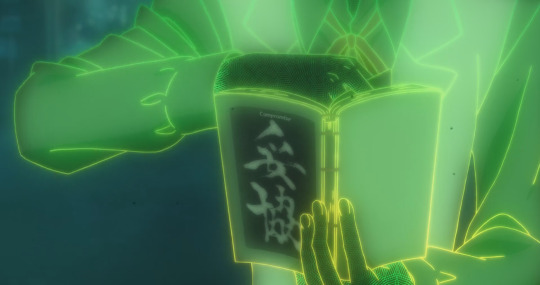
“the phantom’s notebook had the word Compromise written on the cover. A copy of himself that didn’t follow ideals but made compromises was an abomination to Kunikida.”
Considering how abilities act as the shadow to every character in this story, this is a nice detail that shows how Kunikida’s inner desire is to compromise, because carrying such heavy ideals is undoubtedly a burden. However, because he holds onto his ideals so strongly, it becomes his biggest weakness AND his biggest strength.
9. There’s a super small detail added to this scene with Dazai, Fyodor, and Shibusawa. When Dazai suggests that Shibusawa could be saved by an angel or a demon, the following exchange occurs:
“Hmm... Maybe an angel?” Dazai picked up the skull on the table. “Or maybe a demon?” “It’s obvious what both of your true intentions are, if you ask me.” The third man mirthfully cackled and took the skull from Dazai’s hand.
In the movie, Dazai doesn’t pick up anything, so as a result Fyodor doesn’t take anything from Dazai either.
Because Fyodor walked into the scene after Dazai suggested that an angel or demon would save Shibusawa, I strongly suspect that this was foreshadowing future events in which Fyodor does “save” Shibusawa by giving him his memories back.
The novel adds more to this foreshadowing by having Dazai pick up the skull before it’s taken by Fyodor — essentially having Fyodor take the cards out of Dazai’s hands and put them in his favor.
It’s also worth pointing out that the skull is also the object that Fyodor uses to revive Shibusawa into a supernatural ghost of some sorts at the end of the story.
10. This may be just a difference in translations but in the movie, Shibusawa refers to Fyodor as “Demon Fyodor-kun”, whereas in the novel Fyodor is called “Fyodor the Conjurer.” (Ango uses the Conjurer title as well).
In western esotericism, a conjurer is a person who summons supernatural beings, like spirits, demons, or God.
This slightly changes the connotation of Fyodor’s title from a inhuman being of pure malicious intent to just a human who summons these otherworldly beings. This idea also aligns with Shibusawa’s revival, since he’s some sort of supernatural ghost that was “summoned” by Fyodor.
11. Skipping past the parts where Kyouka and Akutagawa regain their abilities, and Chuuya talks to Ango in the government facility, (since they have little to no changes between the movie and the novel) there is a somewhat significant detail changed in Draconia once again with Dazai and Fyodor.

In the novel, this glowing ball of energy from the movie is actually described as an apple:
The two lights melted into one and spun until they formed a juicy sphere. They had produced a single apple — a juicy, poisoned apple red as blood.
It birthed a skill — and an extremely powerful one at that — the ability to absorb. Every last crystal adorning Draconia’s walls was sucked into the apple with intense force. Ten — a hundred — a thousand — two thousand — every last one was greedily devoured by the apple...
The apple swelled as it absorbed the numerous crystals until the red light became hotter than the surface of hell.
Since the “dead apple” motif aligns with Fyodor’s character, we can assume that the apple is representative of sin, and sin is associated with abilities, as Fyodor believes.
This strange poisoned apple is made of abilities and has an ability (the ability to absorb), and it commits a sin (greed) in its devouring of other abilities; it’s also hotter than “hell”, which is a very specific connection that leads me to this idea:
My theory is that a normal apple represents life, while a poisoned apple (or dead apple), indicative of a stained, impure life, represents sin. Fyodor believes abilities are akin to sin (what a clever rhyme), therefore all of their lives are sinful.
12. This is arguably the most insignificant change of this entire post, but I feel obligated to put it here regardless since it was different from the movie. When the Special Division detects the singularity of Shibusawa’s dragon form in the novel, it says:
“Abnormal values for singularity are increasing! They’re twice — no, 2.5 times higher than they were six years ago.”
In the movie, the number is five times higher instead.

Why did this number change? Is it significant? I honestly have no idea (I’m surprised I even caught this), but it’s there and I had to document it anyways.
13. The novel adds this narration for Shibusawa when he gets his memories back and he’s in the orphanage’s room with Atsushi:
“Shibusawa clearly recalled the events from six years ago. Fyodor had enticed him to go to the orphanage where he tortured a young Atsushi... until Atsushi fought back and killed him.”
There’s two things to take away from this: Fyodor had known Shibusawa for at least six years, and Fyodor had been planning the events of Dead Apple since at least six years ago.
I find it hard to believe that Fyodor’s plan was thwarted by Dazai, because of how Fyodor demonstrated his ability to plan ahead in the main series, but I’m not sure what the long term effects of this plan could be. If Shibusawa succeeded, then it could’ve aligned with the DOA’s goals, but once again I don’t think Fyodor’s plan was actually foiled.
14. Super minor once again, but right after Shibusawa gets revived, the last sentence of chapter 5 is,
“Nobody would ever see the smile on Fyodor’s face.”
Honestly, I think this was just added to create an ominous tone, but it’s a nice detail regardless.
15. As the red fog spreads across Yokohama, there’s a good part of exposition that connects the “dead apple” motif to Fyodor once again:
“After the red fog devoured the earth, the planet would undoubtedly look like a floating red apple from space. There would be no humans left on its surface, nor any signs they ever existed. It would be a true paradise, and with that, the Dead Apple would finally be complete. A dead planet covered in red fog — that was what Fyodor had planned and sought out.
Nothing other than death could wash away the original sin of man, so it was only fitting for the sin, which started with a fruit, to end with one as well.
It’s pretty long, but I like the way this passage is written, more specifically the last part since it fits well with the sinful poisoned apple idea.
It also aligns with Fyodor’s ideals of creating a true paradise, free of ability users. However, if Fyodor had planned to have the Earth covered in fog, that could mean that his plan was actually stopped by Dazai and Atsushi in the end.
16. Shibusawa has a few additional lines of dialogue when he talks to Atsushi in their final fight.
“The dragon and tiger... I see now why they are called rivals.”
The dragon and tiger have their roots in Chinese Buddhism, but to go further into that topic would make this already lengthy post even longer.
“Don’t get the wrong idea, though. I’m not blaming you for what happened.”
This line is a brief moment of weakness for Shibusawa, which is interesting in contrast to his strong will to kill Atsushi. Just as Atsushi learned to accept the past and the tiger’s ferocity, Shibusawa shares the same attitude by separating the blame from himself to just simply accepting the past for what happened.
17. In the aftermath of the last fight against Shibusawa, Atsushi and Kyouka meet up with Dazai.

Kyouka asks, “Are you sure this is what you wanted?” which prompts two different responses in the movie and novel respectively.
In the movie, Atsushi says, “Just as Shibusawa was able to forget that he’d been killed before, I think Dazai can put his past behind him again. But this is fine.”
In the novel, Atsushi says:
“... I could probably seal away this memory just like how I’d forgotten I’d killed him before. But... I’m okay with this.”
I interpreted Kyouka’s question in the movie to be questioning Dazai’s loyalties, as he did betray everyone, and Atsushi responded in Dazai’s defense because he trusts him.
However, the novel does change Atsushi’s response to focus on himself rather than Dazai, which in turn changes the implications of Kyouka’s question.
Kyouka seems to be asking Atsushi whether he was okay with killing Shibusawa, and Atsushi responds by acknowledging that he did kill Shibusawa, and that’s okay. (a very clear development from the beginning of the story when he believed it was unnecessary to kill anyone, and he didn’t want to kill anyone)
18. In the epilogue, Ango talks about the underlying motivations behind the “Dead Apple” case. This change could be attributed to translation differences (like many others in this post), but the connotation does slightly differ from movie to novel.
In the movie, Ango says, “How is a man like Shibusawa, so intelligent that others look like alien creatures to him, to act, to be destroyed, or to be saved?”
In the novel, Ango says:
“Perhaps the two of them [Dazai and Fyodor] just wanted to get a glimpse of someone like them... Perhaps they wanted to see what he would do and how he would meet his demise... or perhaps how he would be saved.”
The movie simply poses a broad question of what would happen to Shibusawa, a person alienated from the rest of society.
The novel changes this to focus on Dazai and Fyodor’s perspective — two irredeemable aliens from society just like Shibusawa — executing this grand scheme out of curiosity to see what would happen to someone of the likes of them, and if there’s a possibility for redemption.
19. This is the final difference on this list, and it’s quite a large change. In Fyodor’s monologue at the very end of the story, he has a completely different tone from the movie to novel.
In the movie, Fyodor says, “But in order to end this world, rife with crime and punishment, I do need that book.”
The novel says:
Glittering high-rises and stately brick buildings stood side by side in this port city with its countless citizens who struggled against crime and punishment. “I think I’ve taken a liking to this city myself..” Fyodor took a bite of the apple in his hand, and the juicy nectar ran down his delicate fingers. “You’d all better be on your best behavior until next time.”
The reference to the book may have been removed for consistency with the main series, as the book is a part of the DOA’s plan (or more specifically Fukuchi).
It also seems like Fyodor has grown fond of the city, and no longer wants Yokohama to be destroyed, so it’s still possible that his plan deterred from what he had originally intended.
Beyond that, I’m not entirely sure why crime and punishment was mentioned, or why there’s such an ominous tone to his ending statement, but that’s up to personal interpretation.
That concludes the long list of extremely specific and minor differences between the Dead Apple movie and light novel!
Overall, I would say it’s worth checking out the light novel if you don’t have a strong grasp of the Dead Apple story, because it definitely presents the small intricacies of the plot in a more comprehensible way.
On a side note, the manga adaptation has a lot of noticeable differences from the movie and light novel, mostly with the addition of entirely new scenes (which you can read @buraihatranslations — what a shameless self plug). I would highly recommend reading it as those extra scenes are very amusing, to say the least without giving any spoilers.
Honestly, this post was a lot longer than I intended, but I hope you enjoyed it regardless. Thank you for reading!
413 notes
·
View notes
Text
Blooming Brilliant, an Aroace Willow Park Manifesto

[id: a gif of a heart locket opening. One half of the locket displays a picture of Willow Park from The Owl House, winking and making peace signs with her fingers. Blue and yellow stars surround her. The other half reads "willow park my beloved." /end id.]
Greetings! It’s me, User Aroclawthornes, and instead of working on all the time-sensitive homework I have I sat down and wrote an essay explaining why I think Willow Park OwlHouse could plausibly be read as aroace, and why it would be a thematically enriching interpretation. I’ve never written anything like this before, so it’s oddly formal, a little pretentious, and contains a lot of qualifying language, but I'm confident that it gets my point across. I’m not intending to speak over other interpretations of Willow or assert that it's the only true way to read her, but it's a headcanon I find interesting, and I think there’s a lot of evidence to back it up, between certain elements that Willow’s arc employs to some good old overanalysed symbolism. If you're aspec, I hope this is validating; if you're not, I hope it's interesting; if you don't care, scrolling past it is quick, free, and easy.
Some disclaimers on terminology: I’m speaking from an aroace perspective, and so when I say “aspec coding” I’m generally referring to both orientations as a catch-all - a lot of the coding surrounding Willow could go either way. I’m also going to be talking about commonly accepted “aspec” narratives, but I’m aware of the limitations of this insofar as my experiences are only a single facet of the diverse range of aspec people in this world, so anyone who wants to add or argue anything - respectfully - is encouraged to.
Analysis below the cut!
The Thing About Plants
I’m not going to pretend that an association with plants is historically indicative of aspec coding, because, frankly, there haven’t been enough aspec characters to establish it as a convention, and it’s also a fairly wide-reaching branch of symbolism. However, I am going to propose that lighthearted comparisons between asexual people and plants (however misguided on functions of plant reproduction they are) are fairly common elements of budding ace teenage humour, as are related quips about photosynthesis.
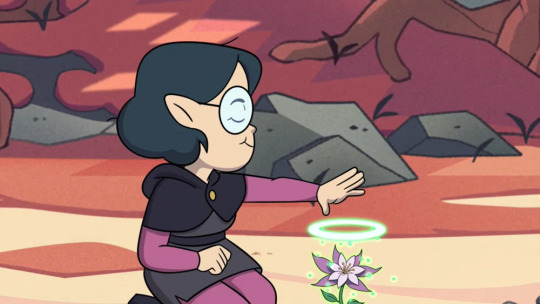
[id: a screenshot of Willow from "I Was A Teenage Abomination", depicting her sitting on the ground while casting a spell over a small, pink flower. /end id.]
I’m also not going to claim that the colour green Belongs To Aromantics, and therefore that All Plants Are Belong To Us, but in tandem with everything else I’m about to cover, the connection between Willow and plants seems like a fairly plausible nudge to a relatively common element of aspec humour.
“Half-a-witch” Willow and the Late Bloomer Experience
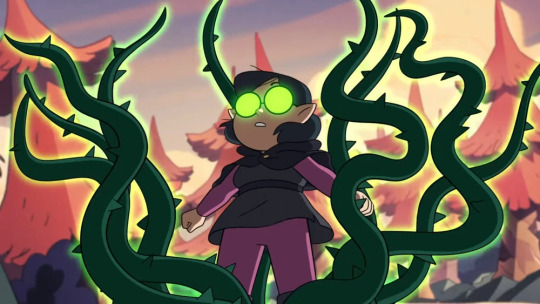
[id: a screenshot of Willow with glowing green eyes, from "I Was A Teenage Abomination", depicting her summoning a mess of thorned vines. /end id]
Willow is literally nicknamed “half-a-witch”, in reference to her supposedly incomplete state - this is a sentiment eerily reminiscent of the pressure to find one’s “other half”, which affects aspec - especially aromantic - people particularly profoundly. She’s considered a late bloomer, someone who hasn’t reached the societal milestones of growth at the expected age, and who is derided and considered immature as a result of this perceived failure. However, we quickly discover that Willow is, in fact, an exceptionally competent and powerful witch - taken out of the restricting frame of the Abominations track, she’s able to grow into her own, “complete” person, therefore proving that she was never really lacking in anything in the first place. Like real-life aroace people, she was perceived as limited and immature based on the expectations and judgements of other people, but Willow was never deficient in anything, least of all herself.
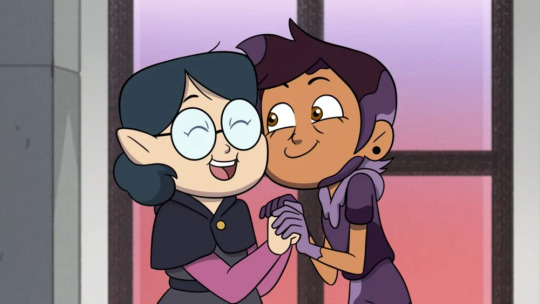
[id: a screenshot of Willow and Luz from "I Was A Teenage Abomination". They are holding hands - the former is laughing with her eyes closed, and the latter is grinning, while covered in abomination goop. /end id]
As far as symbolism goes...the track Willow is initially put in literally requires her to conjure up another humanoid entity, with the expectation that she will therefore prove herself to be a whole and mature person. Only with this ability, she’s told, will she be successful and happy as an adult. The shapelessness of her attempts at conjuring an abomination reinforces this connection in my mind - if I may reference this quote from Ducktales 2017‘s (absolutely stellar) A Nightmare On Killmotor Hill, in which the protagonists explore their own subconscious fears via. the dream realm, for a second:
“I think that’s supposed to be my romantic interest, but I’m too threatened by the concept, so it never takes shape.”
A lot of young aroace people find themselves in situations where they attempt to convince themself of their interest in someone in an attempt to be “normal,” or end up lying in response to family members or friends’ questions about crushes. While Willow’s abominations, first and foremost, represent the expectations from her school, classmates, and family to be a successful, “complete” witch with a profitable future, I think that with an aroace interpretation of Willow they could also very easily be read as representing some latent insecurities over a lack of attraction, or pressure to find a significant other.
(I’m not condemning Willow’s dads, by the way - they seem like perfectly lovely fellas, and I’m confident that they were doing what they thought was best for her. They’re certainly very quick to drop everything to assure her future in Escaping Expulsion, so obviously they care about their daughter very much.)
Greens, Blues, and Yellows: Colour-Coding Willow Park
A while back, I made this post comparing Willow’s palette to the aromantic and aroace flags:
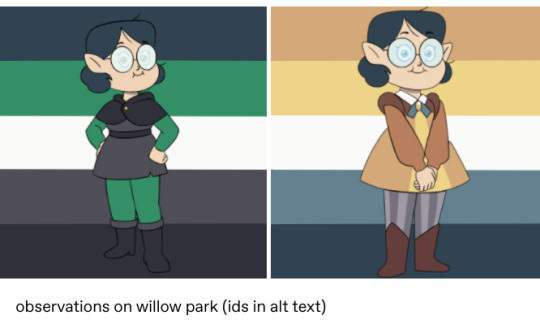
[id: a screenshot of a post depicting the aromantic and aromantic asexual flags, colour-picked from images of Willow in her Hexside uniform and casual dress respectively - these are overlaid on top of the flags. The caption reads "observations on willow park". /end id.]
The grey-and-green aromantic flag has long been the accepted mainstream symbol of aromanticism, and, as the above post - and many others - demonstrate, Willow’s palette reflects it near-perfectly. This could easily be a coincidence, owing to the palette of the standard Hexside Plant Track uniform, as well as her hair and eye colours - which are obviously supposed to be reflective of her plant-related abilities. However, given how fond of employing hidden meanings The Owl House has shown itself to be, I don’t think it’s far-fetched to claim that there’s at least a chance that her palette was constructed with the flag in mind.
The latter is...a bit more problematic for me, although it’s fun to joke about. The blue-and-yellow aroace flag was only created in December 2018, relatively late into The Owl House’s initial production, and it’s still relatively obscure, although on the rise in popularity as the accepted aroace flag (I only recently started using it myself), so I don’t know if Willow’s casual wear is enough to verify the presence of any deliberate subtext. I think it’s a fun coincidence, however, and (as was pointed out in this post) it’s cool that these blue and yellow stars surrounding Willow occur in the same frame as Luz’s bisexual decor:
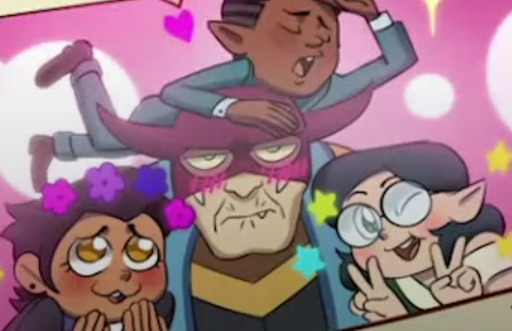
[id: a photograph of Luz, Gus, and Willow, all surrounding a disgruntled-looking Principal Bump. Luz has flowers in the colours of the bisexual flag decorating her hair, while Willow is surrounded by bright blue and yellow stars. /end id.]
also seen above: powerful bi/aspec solidarity
Conclusion:
Do I genuinely believe that Willow is being deliberately written this way? If you’d asked me, say, two months ago, I’d have said probably not - as far as queer representation in kids’ cartoons has come, it has a ways to go, and focusing on transgender characters seems like a more obvious (and equally invaluable) route to go down. I can name maybe five explicitly aspec characters off the top of my head, two of whom have been written as alloromantic and/or sexual in adaptations or continuations of the source material (I have...some grievances with 2005 Doctor Who). But the emergence of Raine, an explicitly nonbinary character on Disney Channel, has given me a little spark of hope, and so, even if it’s never confirmed, it’s comforting to be able to see a character with such strong elements of aspec coding and think to myself, just maybe, that there might be some intent behind it.
I also...really want to see interesting things done with Willow. We’re halfway through Season 2, and despite some promising setup for her arc in the Season 1 finale, she’s sort of been left by the wayside lately in favour of developing the more “plot-relevant” characters, such as Luz, Amity, Eda, and Hunter. Frankly, I think it’s a disservice to her Season 1 development, despite how much I adore all the characters I just listed - beyond any personal motivation, the prospect that Willow could be aroace adds a lot of sorely-sought depth to her, and, as detailed, a lot of this has already been set up in her earlier episodes. I just...I think it’d be neat. Rarely do you get a kids’ show so brazenly queer in its themes as Owl House, and aspec people deserve to be included in that.
Willow would also be great aroace representation because, well - those five or so aspec characters I mentioned being aware of are all white or “raceless” (...also written as white, basically), and so an aspec Asian character would be a really lovely step forward in this area. Additionally, all the characters I referred to are also conventionally skinny, and Willow is not only fat, but written in a way that doesn’t treat this feature as a caricature. People who are more knowledgeable on these topics than I are absolutely free to make additions, as is anyone who feels like I’ve left certain details out.
tl;dr: Willow’s association with plants could be read as a cool nod to aspec humour, her “late bloomer” narrative is eerily reminiscent of some common aspec experiences, her palette speaks for itself, and it’d be really cool if we could diversify the so-far fairly bland sphere of aspec representation.
I’m going to conclude this by linking Rose by The Oh Hellos, because they’re my favourite band, they share The Owl House’s initials, and I also think it’s a good Willow song. Peace out.
youtube
#the owl house#willow park#pspspspsps you will read my 1.5k word aroace willow essay#hooting#meta#willow#aroace willow manifesto#fuck it. this is getting posted
35 notes
·
View notes
Text
Castlevania Season 4: I’m not mad, just disappointed
Season 4 is poorly written fanfiction, which is...better than a lot of things could be, I guess.
Spoilers below the cut.
Content warning: trauma, sexual assault, psychological manipulation
The Gods Have Had a Change of Heart
Or, “Season 3 Blocked and Ignored”
Season 3 felt like the fabric of the universe had been twisted just to inflict additional pain. Season 4 overcompensates in the other direction; trauma evaporates, and good things happen for no other reason than to make our favorite characters happy.
The Season 3 finale left two characters in particular totally devastated: Alucard and Hector. Alucard is violently betrayed in a horrifying sexual assault by the first two people he’s spoken to since Trevor and Sypha left. He ends up killing them in self-defense and puts their bodies on stakes outside the castle, alluding to his father’s habit of doing so and potentially hinting at a turn toward evil. Hector is seduced by Lenore and then enslaved using a magic ring.
Yet at the start of Season 4, it’s as if these things never happened. Alucard is troubled, but not totally devastated, certainly not evil. Taka and Sumi are referenced in exactly one conversation with new character, Greta, in which she says the rather tactless throwaway line, “I had a boyfriend and girlfriend at the same time once. But they never tried to kill me.” Hector is nominally imprisoned, but immediately seems highly agentic, perhaps even more so than before. He studies, lays traps, and makes secret plans with other people. Furthermore, his relationship with Lenore is completely transformed. From falling to his knees in abject horror and despair at being enslaved, he suddenly switches to light banter, in what is apparently a basically okay, mutually enjoyed romantic/sexual relationship. Manipulative, selfish Lenore is now a sympathetic character struggling to reconcile her own role and feelings with Carmilla’s plans.
The events of season 3 happened, remaining canon in the most basic, literal sense. But the emotional weight attached to them has disappeared into thin air.
Not gonna lie, I did breathe a sigh of relief when I saw that Alucard and Hector were okay. I’m soft-hearted! I don’t like seeing characters I like suffer! I mean, conflict is important, and I can deal with (or even enjoy in a certain sense) seeing characters suffer if it makes sense and serves a narrative purpose. But as far as I can tell, the season 3 finale was nothing more than lurid, meaningless violence. I probably wouldn’t have continued watching the show if it devolved into nothing more than finding novel ways to torture the characters.
Still, it doesn’t feel quite right to pretend like nothing happened either. Or, really, not that nothing happened, but that those things didn’t matter, didn’t hurt, didn’t leave lasting scars. That’s...almost kind of worse.
But, I thought, I can sort of forgive this sudden shift in the stars, given that there may have been some sort of change in creative direction relating to Ellis’ decreased involvement with the show.* Plus, season 3 was insanity. It’s not like it was full of great writing choices, so if we quietly ignore some of them, maybe that’s for the best.
*I only later learned that Netflix actually chose to continue with Ellis’ season 4 scripts. It is not lost on me that maybe Ellis doesn’t know how to write about the lasting effects of traumatic sexual experiences or how power dynamics can make a sexual relationship problematic because he doesn’t understand that those things exist.
Characters Being Nobody and Nothing Happening
Pretty Pictures, Not Much Else
Unfortunately, the disconnect between seasons 3 and 4 isn’t the only problem with this season. Although I felt that season 4 was a bit less boring than season 3 (I particularly enjoyed some of the earlier episodes of season 4), it suffers from the same basic problems of Characters Being Nobody and Nothing Happening.
None of the characters experience any significant development, let alone any sort of coherent arc. Sypha has changed slightly, becoming more rough and jaded. I did really like the scene where she talks about becoming the kind of person who says “shit.” I think it really speaks to how entering into a relationship with someone means taking on aspects of their lifestyle, and how that can change you in ways that you can’t predict and therefore can’t exactly “agree” to. Sometimes those changes are good, sometimes they’re bad, sometimes they’re neutral, and sometimes it’s difficult to know. But you have to accept that you’re sacrificing some aspects of the person that you could have been if you chose to live completely independently, or with someone else.
Trevor really hasn’t changed since season 1 when he first decided to take up the mantle of hero again. Likewise with Alucard. Hector and Lenore change, as previously noted, but that change is sudden, jarring, and occurs completely off screen in between seasons 3 and 4. Carmilla dies as exactly as she lived: bitter, angry, and violent. Saint Germain just kind of...gets fucked over in a nonsensical subplot, which is its own whole can of worms.
We also get several new characters in season 4, none of whom have developed personalities or motives, nor do they develop any of those things over the course of the season: Greta, Zamfir, Varney, Ratko.
And nobody. Does. Anything.
Trevor and Sypha spend the entire season trying to explore and aid Targoviste, which comes to absolutely nothing. They’re unable to help anyone, Zamfir dies, and they end up just jumping through a magic portal to the actually relevant subplot in the finale. Carmilla literally does little more than draw maps until she’s ultimately killed. Hector plays a minor role in Saint Germain’s extraction of Dracula from Hell; otherwise, he and Lenore basically just exchange banter. Saint Germain does sort of do some stuff? But it’s often unclear how he’s made his connections, who the people who are helping him are, or what exactly he’s doing in terms of his magic beyond “whatever it takes to get back to his lover.”
Sure, there are fight scenes, but they feel meaningless. There’s no context, no stakes. There’s also a LOT of dialogue, and it is. Not well written. Exposition is embarrassingly clumsy at times, and the philosophical musings are cliche at best, muddled and confusing at worst. There’s just not all that much going on.
That is, except for Isaac. But more on him in a second.
What Kind of Show Is This?
When the plot line adapted from Castlevania III: Dracula's Curse ended with season 2, the show struggled to establish a new identity.
Despite nominally dealing with themes like whether humanity is inherently good or evil and how to cope with wrongdoing and loss, seasons 1 and 2 ultimately boiled down to a pretty generic action-adventure/fantasy plot with found family/power of friendship elements. Main characters Trevor, Sypha, and Alucard don’t really wrestle with big philosophical questions or suffer any major defeats. They know that they have to take down Dracula for the good of the world, and they work together as a team to do it, with a little character development relating to their various backstories sprinkled in.
Then season 3 happened, and things got weird. The trio is broken up for what feels like a pretty trivial reason—Alucard has to protect the castle and Belmont hold, I guess? And the result of that decision is that the dynamics for the three main characters are completely unbalanced.
Ellis openly admits that he basically went feral with the writing of season 3, and it shows. The messaging in seasons 1 and 2 was cliche, but consistent. The message of season 3? Anyone’s guess.
Season 4 reversed the darkening of tone from season 3, but shares its inability to pick a story and tell it.
Isaac is the Main Character
Always has been.
While I can’t say that his character or arc are perfect, I can say that he actually has a character and an arc. He starts off motivated by his fierce loyalty to Dracula, then has to struggle to find his purpose once Dracula is gone. He goes from subservient to agentic. He goes from fully endorsing the genocide of humanity and not caring about his own life to seeing some worth in humans and genuinely wanting to live. He has an interesting moment that deepens our understanding of what night creatures are, while also serving as an exploration of the meaning of one’s fundamental nature. Most importantly, these changes happen naturally over the course of the show. They never feel forced or out of the blue, and while I feel like even more could have been done with Isaac’s character, there’s a lot to appreciate about what is there.
If there’s any thread holding Castlevania as a single, coherent work together, it’s Isaac. Not only is his character the best executed and the most coherent over the course of the show, his character explores themes that are larger than himself and relevant to the show as a whole, like those mentioned earlier: misanthropy versus a belief in the value of humanity; the ability to go beyond one’s “nature” or initial circumstances; and how to respond to being wronged or losing something important to you. Exploring the individual lives of characters is great, but really good writing usually requires going beyond that to reflect on broader questions and ideas. Isaac is the only character here that serves that larger purpose.
Sorry...I Just Don’t Buy It
The season 4 finale is crazy, although in a different way from season 3′s.
Varney being Death makes no sense on several different levels. I’m not going to spend a lot of time picking that particular plot twist apart, but I will talk about why I think it doesn’t work at the largest scale, and how I think season 4 might have been done better.
Last minute twists with zero foreshadowing are rarely a good idea, and this is no exception. Why introduce this “Death” entity at the last minute to be the most important battle of the season? The finale of the entire show, even? Besides the lack of logic or emotional buildup, this robs the show of the opportunity to make use of the antagonists that it already has. Since Dracula died, Carmilla has been the obvious choice for a new big bad. Why hasn’t she done more?
Season 4 feels crowded with characters and plot lines that amount to nothing. Why not bring some of these characters together? If Carmilla is the main antagonist, how come she never meets any of the protagonists (except Hector, who is a pretty minor player in this ecosystem) or even affects them in any way?
Season 4 feels like maybe it was trying to make something out of season 3 and the model that it presented, but it ultimately fails to do so. The writers throw the trio back together at the end anyway, so why not have them rejoin sooner and work together? Maybe Sypha and Trevor’s past experience with Saint Germain could have helped Alucard and Greta piece together what he was plotting sooner, rather than all four of them being completely blindsided by it in the penultimate episode. (Sypha and Trevor know that someone is trying to resurrect Dracula, but they fail to find out any actual detail about the plans, despite their supposed attempts.) Have characters actually do stuff, figure stuff out, advance the plot!
Likewise, maybe Carmilla becomes aware of Saint Germain’s scheming, sees it as a threat, and tries to take him down. Maybe she tries to get involved and somehow use alchemy or the Infinite Corridor to her own benefit. What does it look like when power-hungry Carmilla, who wants to rule the world, finds out there’s an entire multiverse out there? That could easily set her up to be a foil to Saint Germain, causing him to realize that what he’s doing is wrong.
What actually ended up happening in the show feels disjointed and often empty. In particular, most of the events that happen in the last two episodes just don’t really work for me. I didn’t like Trevor suddenly sacrificing himself to this random, new, super powerful enemy, or how the gems and dagger that he found just happened to be the perfect weapon to kill this new enemy, or how he inexplicably returns from the dead.
This kind of thing is what I mean when I say that this season feels like fanfiction. Trevor comes back from the dead for no discernible reason other than that it would really suck if he died. Greta as a character seems to literally only exist to be Alucard’s girlfriend and support him so that he doesn’t have to continue to be alone and potentially turn evil. Alucard’s trauma from Taka and Sumi and Hector’s trauma from Lenore are both conveniently erased. Even Dracula and Lisa are resurrected somehow and get their happy ending. And it’s like, I guess I prefer deus ex machina to the opposite (Does that have a name? When everything is going well but then something terrible happens for no reason other than to make things worse for the characters?), but they’re both bad writing.
God. This isn’t even getting into what happened with the Council of Sisters. And I don’t even really like those characters, but that doesn’t mean I want to see their characters handled poorly.
I’m not sorry that I watched until the end, but I can’t in good faith recommend the show as a whole. If you’ve yet to watch Castlevania, just stop at the end of season 2. While there are some shining moments in seasons 3 and 4 (4 more than 3), it’s just really not worth it.
#review#thoughts#television#animation#adult animation#video game adaptation#fantasy#Netflix#Netflix Original#Castlevania#storytelling#writing#characters#plot#character development#vampires#Isaac (Castlevania)
47 notes
·
View notes
Note
Ok, so I’ve always noticed some of the racism on TVD , most notably the treatment of Marcel and Emily, and the founders day parade episode (which, as a Virginian I have to say that the episode made me low-key ashamed when I re-watched it years later). But it took me a while to catch onto the racism on Bonnie‘s character. I was wondering if you have done a meta about it and could link me to it, or if you could do one?
Well it only took me like a year but here ya go!
youtube
Despite the fact that The Vampire Diaries is a show that was ostensibly created for girls and young women, the show undeniably seems to lack a certain level of respect or basic interest in its female characters. And while every single significant female character demonstrates that misogynistic point of view in one way or another, one of the most unique, distinct, and apparent instances of The Vampire Diaries' sexism is on peak display with one of it's leading female characters, Bonnie Bennett.
Bonnie obviously occupies a particularly interesting role in the series because she's the only black leading character, and it's also hard to miss that The Vampire Diaries universe has a pretty apparent issue with it's non-white characters as well.
The race problem on TVD expresses itself in a few different, extremely blatant ways. The most obvious issue with people of color on The Vampire Diaries is that those who are actually PoC within the narrative itself are typically pushed to the sidelines and relegated to supporting players at best, but there is also an issue with presenting PoC performers who are white-passing as white characters.
None of the PoC characters in The Vampire Diaries get very good treatment, but the series seems to be exceptionally problematic when it comes to its presentation of black characters. While black people arguably get more representation than any other non-white characters in this fictional world, they are almost all outrageously attractive, extremely light-skinned, and conveniently lacking in any emotional needs or inner life that needs to be addressed within the narrative, seemingly designed to show up, perform whatever service is necessary, and once again fade into the background if not just be killed off entirely.
This is an issue with every black character in the series, but given that Bonnie is the most significant and prominent in the series, it comes as no surprise that she was affected the most intensely by these biases. It's one thing to be a black character, it's one thing to be a female character, but being a black female character in the TVD universe is exceptionally crippling. But how exactly did the misogynoir of The Vampire Diaries completely neutralize Bonnie Bennett as a character?
Bonnie was mistreated, dismissed, and outright ignored in many big and small ways throughout the course of the show. But, a lot of that treatment can be pretty easily sorted into a few categorizations. The Vampire Diaries went through a pretty seismic shift from the start of the show to the end, but it has always been a series that falls primarily into two genres, the supernatural thriller genre and the romance genre.
The show pretty clearly transformed from a show that was firstly a supernatural story with a romantic subgenre into an almost entirely romantic story with a supernatural backdrop, but it's safe to say that the vast majority of the plotlines were either focused on magic or love. And, it's not particularly difficult to see how Bonnie was forcibly excluded from a predominant storyline in each genre, even when it made absolutely no sense.
Bonnie was a completely inexperienced witch at the start of TVD, so her cluelessness and powerlessness made a certain amount of sense at that point. But by the end of season 2 at the very latest, it seems fully established that she is one of the most powerful living witches in the world, and for the bulk of the series it is plainly acknowledged that she is one of the most powerful witches who ever lived. Which is exactly why Bonnie's position in the narrative is baffling.
In quite a few instances, Bonnie's magical abilities seem to be somewhat inconsistent, at least in the sense that, if she can solve some of the biggest problems that the Mystic Falls gang is confronted with, then it's very odd that she can't solve the others. And while plenty of characters in TVD are occasionally used as plot devices rather than characters, Bonnie seems to be the one who is specifically designed to show up, fix what needs fixing, and then become set dressing once she's no longer necessary as the mystical solution to every unsolvable issue.
And this is actually a significant problem with the witches at large, but of course is most recognizable with Bonnie because she is the most prominent witch. While not all witches are women of color, it seems like they are far more represented in that faction of the magical world than in any other. So then, it's interesting that the witches are presented as servants of nature who are meant to selflessly restore order to the world without actually using their abilities for their own personal gain.
Of course there are plenty of witches who appear to use their powers for themselves, but still, it's incredibly meaningful that the lone black main character in the series is constantly sacrificing herself for the sake of the otherwise entirely white cast of characters. It's even more meaningful that she seems to willingly put herself in the line of fire every time, and it's also extremely telling that she suffers and even dies without complaint for the sake of other people.
And while TVD has never been the kind of show to linger on emotional moments for too long, Bonnie seems to stick out like a sore thumb in this circumstance as well. Most of the main and even supporting characters have moments where their pain is acknowledged and at least has a second to breathe, but there are quite a few situations where Bonnie should be upset but isn't, or where her emotional journey as a character literally takes place off screen.
This lack of acknowledgment and nearly complete omission of an internal emotional life that doesn't involve sacrificing herself for her friends only further makes Bonnie feel like a plot device instead of a character. And, while no character needs a romantic relationship to make their character complete, it is incredibly relevant that, on a series that was built largely on a foundation of romance and arguably became a completely romantically driven show by its end, only one of the female leads was pretty much never presented as a viable love interest.
Nearly every character is either threatened or charmed into doing what someone else wants them to at some point during The Vampire Diaries, however, Bonnie's charm-to-threaten ratio seems to lean very heavily in favor of threatening. That in itself wouldn't necessarily be a huge issue, but it seems to punish Bonnie in a way that is so severe that it's completely illogical.
Trying to intimidate Elena or Caroline, people who at best have the strength of a baby vampire and at worst are as powerful as a normal human, makes sense. But trying to strongarm the most powerful witch in the world instead of just convincing her to do what you ask seems like an incredibly dangerous and completely baffling decision.
And yet, that is how Bonnie is forced to do nearly everything that she doesn't want to do in eight seasons of the series. By the end of season 2, TVD has canonically confirmed that Bonnie is powerful enough to destroy Klaus Mikaelson, and yet people like Klaus, Katherine, and even vampires as young as Damon get Bonnie to do things by simply bullying or even assaulting her into doing it. And what does Bonnie typically do in response? Absolutely nothing.
At a certain point, the consistent contrast between Bonnie's mystical strength and the way that people treat her in order to use that strength becomes a pretty gaping plot hole. And while it's not unheard of for someone to try to sweet talk Bonnie into joining their team, it is almost always done by a character who is far less powerful than she is and who is completely irrelevant to the narrative at large.
In contrast to characters like Elena and Caroline, the distinction between them becomes even more obvious. Perhaps a thin argument could be made that because Elena is a doppelganger that makes her a tad more unique, but when one of the most powerful creatures on the planet was wrapped around Caroline's finger, it really begs the question, why wasn't anyone ever as invested or even obsessed with Bonnie as they were with the other two female leads on the series?
After all, Elena's love was consistently treated as if it was the greatest prize that anyone could possibly win, and the two male leads were completely obsessed with her and willing to do anything they could to try to win her over. And despite the fact that Elena was at the center of the love triangle that was a significant driving force behind the story for the entire series, she still managed to score a few love interests that weren't Salvatores throughout the show's eight seasons as well.
And, while Caroline was actually treated as more of the reject love interest in comparison to the unattainable Elena, her record with romance is also incredibly varied. Even though she was portrayed at best as the consolation prize and at worst the abuse victim, she did have some sort of romantic relationship with the two male leads in the show. Or at least, that is how The Vampire Diaries chose to portray it.
In addition to her horrorshow with Damon and her incredibly brief marriage with Stefan, Caroline is also a love interest for Klaus, Matt, Tyler, and disgustingly, Alaric. Arguably the only main male character who doesn't serve as Caroline's love interest or potential love interest at any point is Jeremy.
Although this laundry list of love interests can be partially excused by the fact that Caroline is characterized as someone who wants to date a lot, the contrast bet0ween characters like Caroline and Elena and characters like Bonnie is astonishing.
Over a nearly decade-long run, Bonnie's only legitimate leading men are Jeremy, Elena's kid brother who Bonnie will willingly die for but who also prefers a literal dead person over her at one point, and Enzo, her epic love romance that comes about at the very end of the series in a relationship that almost entirely develops off-screen.
Of course, female characters do not need love interests to validate their characterization or very existence, however in an environment where every single barely significant supporting character seems to get at least two love interests, it's incredibly telling that Bonnie Bennett gets two important love stories in eight seasons of storytelling.
It seems even more relevant that the show seemingly went out of its way to sidestep almost any and all opportunities for romance in Bonnie's character arc. Whether it was Kol, Kai, or Damon Salvatore, there were quite a few instances where there was a clear and easy route to develop a love interest for Bonnie in a way that made sense and had a pretty solid amount of audience support, and yet the series always went out of its way to avoid it.
In stark contrast, Caroline is still seen as a viable option for a burgeoning love story when she's pregnant, and Elena is an acceptable love interest when she's literally unconscious. And yet, in a series that began with romance as its secondary genre and that evolved into a romance series with a supernatural backdrop, Bonnie is supposedly not as appealing of a love interest as Elena and Caroline regardless of any circumstances, no matter how insane.
If these issues existed in a vacuum then they might be excusable, but considering how poorly The Vampire Diaries treated its female characters and black characters, it's pretty much impossible to avoid the reality that Bonnie Bennett's entire character arc was likely hamstrung by the fact that she was a black girl.
In any reasonable circumstances, Bonnie would have arguably been at the center of every single supernatural storyline, and she logically would have been a far more appealing love interest to any powerful characters in the series. But instead she spent the vast majority of her screentime with her inner characterization ignored, her personal development unexplored, and serving as little more than a glorified deus ex machina who didn't even want her friends to bother mourning her when she literally sacrificed her life for them.
Representation was always an issue in The Vampire Diaries universe, and unfortunately it seems like Bonnie was the definition of their token black character. Although the series had eight entire years to course correct and had many seasons where they were desperate for new ideas and decent character development, the racism and misogyny of the series seemingly prevented them from ever tapping into the enormous untapped potential of someone who should have been one of their flagship lead characters.
#bonnie bennett#anti tvd#anti the vampire diaries#misogynoir#racism#sexism#misogyny#tvd#the vampire diaries#bonnie bennett meta#anti tvd meta#tvd meta#meta#my videos
49 notes
·
View notes
Text
DTeam Tumblr Demographics Survey Results (Part 2):
What does DTeamblr look like, what does it have to do with MCYT history, and why does it look like a rainbow?
I’ll make an educated guess here and say y'all enjoyed my last post (totally unrelated to the way I gained almost 50 followers overnight). Anyhow, thank you so much for the overwhelming support! I’m so glad a lot of you felt you could relate to my deep-dive into the leading personality type on DTeam Tumblr. It took me so many hours to write and research, and as a math major and honors student, it’s no easy feat, so I’m so grateful for the attention it got!
Today we’re discussing the general demographics of DTeam Tumblr and why they might look the way they do. Number 8 will blow your mind! So make sure to keep reading and hit that little grey heart and arrow at the bottom if you like it, so more people get to see it! Thanks for your support! Now, let’s jump straight into the post!
Your Daily Dose of Data
From the 449 responses we received, these are some pie charts displaying the gender, age, and sexuality of all respondents.
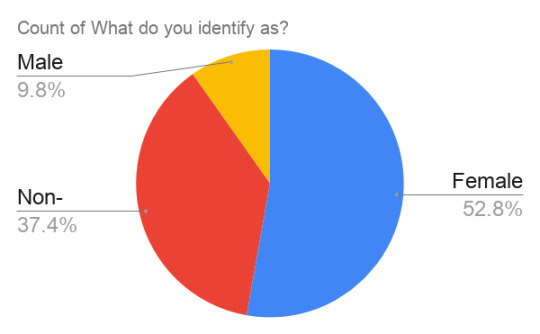
Image Description: Female (52.8%), Non-Binary (37.4%), Male (9.8%)

Image Description: 16-17 (37%), 13-15 (31.4%), 18 and over (29.4%), 12 and under (2.2%)
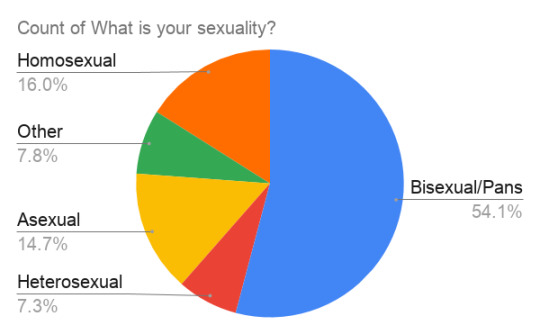
Image Description: Bisexual/Pansexual (54.1%), Homosexual (16%), Asexual (14.7%), Other (7.8%), Heterosexual (7.3%)
Mmhm, delicious! Y'all ready to dig into these stats? Because I don’t know about you, but they certainly don’t strike me as what the general population looks like!
Welcome to Tumblr, the Only Community Where Straight Men are the Minority
So these statistics certainly didn’t take me by surprise. Mostly because the DNF Shipper Survey I took some time ago revealed a similar trend. Not to mention, Tumblr is probably the QUEEREST internet community on the planet.
Funny enough, the survey revealed a shocking number of ZERO heterosexual males respondents. I’ll say it louder for the people in the back. ZERO straight males were recorded out of 449 respondents for this survey!
Now, this isn’t surprising for the Tumblr community by itself, but I can say I’m somewhat surprised in terms of the MCYT Tumblr community. (Obviously, the survey specified DTeam Tumblr, but there is a big overlap between both communities, so I will be using them interchengably when it seems relevant.)
Let’s break this down. The survey reveals the largest age population is 16-17, though it’s not by a great margin in comparison to 13-15 and 18 and older, which doesn’t surprise me either. Some of the major critics of the DTeam Fandom and other MCYT Fandoms love to claim the fanbase’s majority age range lies with children and pre-teens. While it’s an undeniable fact children are drawn to Minecraft, it’s also a misconception to paint it as solely a community for younger viewers.
In the MCYT Tumblr and DTeam Tumblr communities, specifically, we see this is not the case. Only 1/3 of the respondents of this survey are under the age of 16 (you could attribute part of it to the fact younger people might be less inclined to participate in this survey, but it is still a notable difference). I can’t say these age ranges are similar in other parts of the community like DTeam Twitter, Tik Tok, or Reddit, but if I had to make a guess, I’d say Tumblr lies toward the older of the bunch, with Reddit being the oldest and Tik Tok being the youngest (I do hope to perform this survey on some of the other communities, so please stay until the end if you want to help with that).
One of the likely explanations to why the ages for DTeam Tumblr look this way is the fact a big chunk of the community has likely been watching MCYT for a long time (even with breaks in between). I, myself, used to watch channels like PopularMMOs, Aphmau, and PrestonPlayz as a kid, and I presume many of you are familiar with them as well. With the resurgence of MCYT in the past year, it likely drew a lot of the older viewers in addition to the new ones.
But enough about age. What I really want to highlight on this post is the attraction of queer individuals to DTeam Tumblr and MCYT as a whole.
Why is the current MCYT Fandom so queer in comparison to the previous generations?
This is a huge open-ended question and considering I can only capture so much of the DTeam and MCYT community, the rest of this post should be taken solely as a theoretical analysis as opposed to fact.
With that out of the way, let’s start by discussing the shift MCYT has undergone over the years (I promise this will circle back to the question of queerness in the MCYT fandom, but we need some background before we can come up with a decent theory).
When Minecraft was first released, it proved to be a monumental change in the gaming industry. This simple little indie game took the world by storm. It was so vastly different from what the general population generally viewed gaming as (first-person shooters, story-driven games, action games, etc.) Not to mention, it didn’t exactly solely appeal to only a small margin of gamers, those being white cis males.
The gaming industry has notoriously been known in the past for its heteronormative community and general prejudice toward minorities. Though it has gone through a significant change over the decades, we certainly can’t say it’s fully gone.
Yet for whatever reason, the recent MCYT has taken the interest of so many queer people in comparison to other gaming YouTube communities. Why? Why are queer people so drawn to this community? And, more precisely, why does it feel so different than the old MCYT? Lastly, how does this relate to the conclusion about the leading personalities of this fandom we made in the last post?
The Niche Communities of MCYT Over the Years
MCYT has always been a huge, over-saturated genre of YouTube with content appealing to a variety of audiences. It’s dominated gaming content for years, and I think we can all safely say it’s never been bigger than it is today.
So why is it that just now it feels like the queerness of the fandom is popping off? Why now as opposed to say five years ago when MCYT was at another one of it’s strongest stages?
It seems like the community has made a tremendous shift in relation to breaking gender norms and LGBTQ+ subjects, not only in the fans but within the creators themselves. Was flirting and calling a pretty-boy streamer pet names as normal in the past as it is today? Were straight gamer guys putting on dresses and a full-face of make-up as supported back then? Were “marriages” and “pregnancies” within Minecraft boys an everyday occurrence like they are now? How is it that MCYT has dominated a Twitch dating show where flirting with the gay host and among straight contestants themselves is just another bit of entertainment? Where is this all coming from?
Recently, I watched a 2 hour documentary depicting all of the stages of Minecraft YouTube and how it has changed over the years. If you haven’t seen it and you have some time to spare, I HIGHLY recommend it! It’s very informative, and it honestly gave me such a strong sense of nostalgia that makes me choke up every time I think about it. I’ll link it below.
The documentary does a great job at exploring the different niche communities that dominated MCYT since it first took off. Some of such communities include the basic Let’s Players, the team-based Let’s Play channels like How2Minecraft, the roleplay story-centric ones like Aphmau and Samgladiator, the tutorial, building and technical side like Mumbo and Grian, the PVP-centric Bedwars or Hypixel channels, the Machinima community, the comedy side like ExplosiveTNT, the parody music videos, and so many more. All of the mentioned communities have dominated Minecraft at one point or another, many of them still having a rippling effect and/or a loyal community today. All of these communities have certain aspects that define them, some of which parallel the current overtaking content in the present.
How can we compare MyStreet to the Dream SMP?
Taking Aphmau as an example, her MyStreet series had a TREMENDOUS success a few years ago, racking in millions of views and bringing in a lot of money that eventually allowed her to hire voice actors and increase the production of mentioned episodes. The roleplay series was so successful it ran for six seasons!
Now, let’s compare that to the Dream SMP. It seems like a big comparison to be making considering they appear so different at first glance. For once, Aphmau is just one channel whose audience caters toward girls and younger people who enjoy romance. The series is set-up in an episodic-format that resembles more of a TV series than actual Minecraft videos.
Meanwhile, the Dream SMP is a collection of content creators with a mix of improvised storylines and the occasional regular video that resembles more of a Let’s Play series than a RP series.
You could say the only true comparisons to draw out of these two are the popularity they had/have and the profit they brought to their respective creators.
However, there’s two other key similarities that you’ll find not only within these two specific examples, but many other channels and communities as well. Story and characters.
MyStreet’s story aspect is fairly obvious seeing as it’s a episodic series that focuses on a fictional story. The Dream SMP’s story aspect isn’t as clear, but it’s evident there is a story playing out in the foreground and background, whether intentional or unintentional, or improvised or not.
Character is where some of you might start to question me. It’s obvious MyStreet has characters. I mean, it is a fictional story, after all. But the Dream SMP? Light, they’re obviously people!
Well, my answer to that is yes and no--sort of. The Dream SMP’s story heavily relies on roleplay, bits as you might call them. Events that aren’t necessarily planned out as a fictional plot like the typical MyStreet episode is, but they aren’t exactly real. Schlatt is obviously not a villain in real life, he just likes to impersonate as one for the narrative. Wilbur isn’t crazy, but it’s a way to spice up the heroic story surrounding Tommy and him.
It’s video-game improv. Except the actors behind the content just so happen to be real people playing off the personalities and “brands” they have obtained.
Brands. It all boils down to this. In the entertainment business, without a clear vision of your project and a clear way to brand what your consumer intakes, your project will likely not find a lot of success.
There’s a reason why Tommy plays off his loudness, using an overexaggerated laugh that although may not be completely fake, it is likely not the laugh he uses everyday. Or why BadBoyHalo is this supposed innocent muffin who doesn’t understand the crafting table meme and other references that are fairly easy to google and find the meaning of. Or why Sapnap is this chaotic being who loves starting pet wars and we love to paint as an arsonist in the Dream SMP. While all of these personality traits may be a part of their true selves, they’re played up for the camera--for the story. They act as the personas that define their characters in the narrative.
They have a clear brand and vision that appeals to the audience and makes them tune in on the daily to see how they all come together. It’s like roleplaying a more extreme version of yourself, one that brings home the money.
Story and characters run across every entertainment outlet. They define their brand. Aphmau has her characters and series. Hermitcraft has a set of memorable personalities and episodic videos that formulate its own story that is less like a narrative and more of a history of the server. ExplodingTNT has his recurring cast and comedic sketches. Most of these niche communities have a form of story and character defining them. It’s how they achieve a clear sense of branding and cater to a specific audience.
Queer Theory in MCYT
Having said all that, why does the MCYT of today draw in so many queer viewers?
Let’s think about this. In my last post, I ended by mentioning DTeam Tumblr is a sort of safe haven for INFP and INxx types who might be placed in the “other” category by society. INFPs, specially, are predisposed for escapism--one common form of it being fiction and entertainment. Not to mention, INFPs are feeling types who, as introverts, seek a personable connection. It’s why it’s so easy for them to obsess over book characters or fall in love with content creators.
Now, let’s imagine a whole community of LGBTQ+ INFP and INxx types. Actually, scratch that, we don’t even have to imagine it.
It’s what our community looks like today.
And why are so many so drawn to the DTeam and Dream SMP of all things? It’s a personable storyline that essentially forms a direct tie to the viewer. Unlike pre-recorded fictional TV series you tune into on your device, the Dream SMP is a whole load of chaos that blurs the lines between reality and fiction where fans can directly connect to creators and get to know them as people through a storyline that features sub-textual queer themes and non-conforming behaviors.
The MCYT content creator community of today is more non-conforming than ever before, and knowing this whole fact, knowing that many of them might place themselves in the “other” category or at the very least aren’t afraid to break the norms and be seen in that light, is a comfort in itself for LGBTQ+ INFP types. Once again, it’s a safe space that helps you escape from the troubles of real life, one you relate to.
Okay. So although this does answer why the fans look like they do, what about the creators themselves? Are we really supposed to believe this all came through naturally? That a bunch of straight guys suddenly decided wearing dresses was something they wanted to do?
I don’t mean to sound cynical here, and I’m in no way trying to insinuate creators have solely some sort of corrupt ulterior motive. Things are never as simple as they look. However, the truth is, a part of it lies on the attention it’s gotten.
I’ve talked a lot about DreamNotFound and the way Dream uses it as a marketing ploy. I stand by my point. However, he’s not the only one who does this in the MCYT community. Why did Finn suddenly go from wearing a dress to cross-dressing as a girl for a whole week? Why are so many creators suddenly deciding wearing dresses is fun? Why does every freaking straight MCYT actively want to flirt with George nowadays?
Let’s just let Techno’s favorite word answer this for us: clout.
It gets attention from one of the largest historically underserved minority community in the entertainment business. We might not be able to see gay flirting in every Netflix TV show or guys not minding dresses and getting fake marriages, but you are certainly going to get at least one of those in every Dream SMP stream and video you tune into. It gets attention. It brings home the money. And do I blame them? Not really.
Interestingly enough, there’s a lot of analytical posts on the MCYT Tumblr community that discuss the dangers of these tactics and why gay jokes and the way queer subtext is treated by MCYT creators is harmful. Despite this, it still attracts such a huge community of queers. So why exactly would queer people actively watch something that’s offensive or harmful to us?
I have a lot more to say about this topic and the morality behind Dream’s tactics, but I’m out of breath for today, so I’ll talk about it in my next post. What better way to start the conversation about the DNF and Karlnap questions of the survey than a good ol’ discussion on the morality of queerbaiting and the likes?
If you got this far, I’d appreciate it if you liked and reblogged this post if you enjoyed it and/or learned something new! Also, important news, I would really like to perform a similar study on the DTeam Twitter Community to measure the differences in demographics across platforms. I would REALLY appreciate it if you guys could go like, retweet and share the link I posted on my Twitter about it (tweet will be linked in the reblog below) so it reaches more of the DTeam Twitter community!
However, if you filled out the survey yourself here or you associate more with DTeam Tumblr than DTeam Twitter please DO NOT fill out the survey again! I’m trying to make sure it reaches the audience that mains on Twitter, but I need a little help with that since I don’t have as big of an influence on Twitter than on here for obvious reasons.
Anyhow, thank you so much for all your support! I really appreciate y’all and make sure to hit the follow if you want to lookout for the next demographics post! <3
(Pssst, I’m releasing a MCYT DNF superpower AU longfic next month... You should totally go check out the post on that if you’re interested in it...)
#dteam#dteamblr#dream smp#dttblr#mcyt#dreamwastaken#dnf#mcyttblr#georgenotfound#dreamnotfound#dttwt#dream team#dteamblr demographics survey
102 notes
·
View notes
Photo

*As is usual with our discussions, there may be a few spoilers ahead, so beware.*
We all were incredibly excited to read Angeline Boulley's FIREKEEPER'S DAUGHTER when we first heard about it, so we decided to make it our second group discussion book for the year. Come join us!
As a biracial, unenrolled tribal member and the product of a scandal, eighteen-year-old Daunis Fontaine has never quite fit in, both in her hometown and on the nearby Ojibwe reservation. Daunis dreams of studying medicine, but when her family is struck by tragedy, she puts her future on hold to care for her fragile mother.
The only bright spot is meeting Jamie, the charming new recruit on her brother Levi’s hockey team. Yet even as Daunis falls for Jamie, certain details don’t add up and she senses the dashing hockey star is hiding something. Everything comes to light when Daunis witnesses a shocking murder, thrusting her into the heart of a criminal investigation.
Reluctantly, Daunis agrees to go undercover, but secretly pursues her own investigation, tracking down the criminals with her knowledge of chemistry and traditional medicine. But the deceptions—and deaths—keep piling up and soon the threat strikes too close to home.
Now, Daunis must learn what it means to be a strong Anishinaabe kwe (Ojibwe woman) and how far she'll go to protect her community, even if it tears apart the only world she’s ever known.
[Note: While we will not go into any great detail in this discussion, Firekeeper’s Daughter contains murder, suicide, kidnapping, sexual assault, addiction and drug use, racism, colorism, and death of parents/family members.
You can read an excerpt of the book here!]
Audrey: To get us started--let’s talk about this gorgeous cover! The cover art was created by Moses Lunham and designed by Rich Deas. The first thing I noticed when I got my copy of the book was that the two faces at the top had different skin tones. According to this interview, author Angeline Boulley says that “the different shades of the faces symbolizes Daunis claiming her biracial identity,” which is a major part of the book.
Jessica: The cover is so beautiful. It’s next to me on my desk right now and I can’t stop looking at it. Love how the cover ties into the themes of the book.
K. Imani: This cover is absolutely beautiful! I love the design of the faces looking like a butterfly as well as the bird and bear (I think) and the fire. There are so many subtle images in this cover that you can almost find something new each time. And the colors are so stunning. Like you Audrey, I noticed the faces had different skin tones which I found interesting and made me wonder what was going to happen in the book. Knowing the faces symbolize Daunis’s biracial identity now is powerful and really brings home the meaning of the book.
Crystal: I agree that the cover is gorgeous. In addition to the aspects of her physical appearance and physical identity, Daunis’ cultural identity is also displayed within the illustrations with bears representing her clan. In addition there are the birds like the one that guides her and the sun is in the background too which is from the story of the original Fire Keeper’s Daughter. The faces forming a butterfly is also just brilliant for a coming-of-age story. There’s so much to see. Each time I notice more.
Audrey: Daunis, our heroine, is on the older end of the YA protagonist spectrum at 18. She’s dealing with a lot of upheaval in her life, and things only get more complicated in short order. Something I really liked about Daunis was how often she thought about and evaluated what her responsibilities were--to her family, to her friends, to her community, and to herself. These sometimes complementary, sometimes competing, responsibilities strongly influenced her decisions.
Jessica: You mention the complementary and sometimes competing responsibilities -- that’s exactly it. I loved how her thought process was explored throughout the book in such a thorough and complex way. The way Daunis balances and reconciles the interests of her community with what the FBI wants from her and her quest for justice is laid out really clearly. Sometimes, narratives can tend toward simplistic, binary summations of the issues people, especially from marginalized communities, face -- but that’s just not the case, and Daunis really highlights that. To be honest, I was a little nervous at the introduction of law enforcement and the FBI, given the racism and oppression baked into these institutions, but the way Daunis navigates her interactions with them, plus the way other members of the community tell the truth about these institutions, really played out in such a nuanced way. (I really, really hope that the Netflix adaptation keeps these nuances and hard truths in the show, but I suspect that won’t be the case, unfortunately.)
K. Imani: I enjoyed that Daunis was 18 and on the cusp of adulthood. So many YA novels focus on the character’s high school life but a lot does happen and teens do grow and change a lot in that year after high school. Many have left home for college (that was me) or working full time and they are learning how to navigate a life that was not completely so structured. In addition to having to deal with changing friendships as people move away or just become busy. It’s a unique time and I loved that we got to spend time with Daunis as she was going through this change. She was learning how to become an adult in one of the most stressful ways possible, and sometimes I felt she was a little too idealistic, but I’m glad that she kept her truth throughout and was focused on helping her community in addition to helping the FBI. Her perspective helped keep the investigation grounded in what mattered which wouldn’t have happened if she wasn’t involved.
Crystal: Daunis balances a lot of responsibilities and really tries to follow what she’s learned from elders. She considers how her actions may affect all of her relatives within her family, clan, community, and beyond. Boulley embedded a lot of elder wisdom within Daunis’ inner dialogue such as thinking about the seventh generation when making decisions.
Audrey: One of the things that I really appreciated about Firekeeper’s Daughter was the depth of the setting and the characters in it. While Boulley says that Daunis’s tribe is fictionalized in the author note, it’s clear how much care and thought Boulley put into creating Daunis’s community. It’s filled with people who have complex histories (both within and between Native and non-Native groups), with differing opinions and prejudices and goals.
Jessica: This really highlights how important it is to have stories where cultures and communities aren’t portrayed as a monolith. It’s not just the right thing to do, it makes for a better and more accurate story. I read Firekeeper’s Daughter and watched the TV show Rutherford Falls back to back, which really drove home the power of depicting a community with nuance. (Also, sidebar: Highly recommend checking out Rutherford Falls, which does this really well.)
K. Imani: One of my favorite aspects of Firekeeper’s Daughter were the elders in Daunis’s tribe and how we got to hear many of their individual stories which showed the complexity of real life. I loved that Daunis listened to her elders, really took in their stories and learned from them. Her interactions with the elders greatly contributed to her growing sense of self and her desire to help her community. And this is where this novel being truly #ownvoices shines because of Boulley’s connection to her community that she took great care in making sure Daunis’s tribe felt real and authentic as well as culturally accurate. It was not full of stereotypes but filled with real people who had real lives and real stories. I was drawn into Daunis’s community and really cared about the people that made Daunis who she is and becomes.
Crystal: Like Jessica says, there is a lot of nuance here. When you have a wide variety of characters who are not simply good or bad, the story has more power and is definitely more believable. The people in our everyday lives are also complex and have a story if only we take the time to listen. This is what Daunis excels at with elders and others around her. She is paying attention and trying to connect with people. There is a lot of love throughout the book of many different types. The love is beautiful and yet also has some ugliness too in the betrayals. It’s not picture perfect and that makes it so much more real.
Audrey: Boulley tackles a lot of difficult topics in Firekeeper’s Daughter, especially ones that can hit hard on a community level. Much of the plot focuses on drug use and addiction, of course, but violence against Native women also has a significant impact on what happens in the book and affects multiple characters, including Daunis.
Crystal: Daunis and the other women are examples of the many, many, women who have been harmed in the past and the present. That’s not the whole story though. As Daunis is learning, there are many ways of being brave. Throughout the story, we see many women being strong and brave though at initial glance their actions may not seem to be either of those things. There is bravery in speaking out, but sometimes bravery requires something else. These women have done what they needed to do to survive or help their loved ones survive.
Audrey: Firekeeper’s Daughter has a complicated ending, and it left me thinking about two things. The first was how proud I was of Daunis and her character growth. There were a couple of times where she came across as very Not Like Other Girls (particularly with the hockey players’ girlfriends), but that changed over the course of the book. The second was grief at how many people and institutions failed Daunis and her community, both within and without. Just as one example, even though Daunis is a confidential informant for the FBI, the FBI doesn’t come out of this story as a Good Guy.
K. Imani: I was torn by the ending too. I so wanted justice for Daunis and Lily and for others who were murdered, but on the other hand life doesn’t always have a happy ending and I recognize that Boulley gave us that horribly realistic ending because the fight for missing and murdered Indigenous women continues and the fight for justice for Indigenous peoples. It was a heartbreaking reminder of a very real issue. On the other hand, I was so proud of Daunis as well. She was able to achieve her goals of helping out the FBI while staying true to herself and her community. She grew so much as a character and really found her place in her world.
Crystal: The ending gave me much to think about too. Daunis grew a lot as she worked through this complicated puzzle in her community. She learned much about herself and some of the assumptions folks have about others. I also really, really wanted justice, but unfortunately, would be unlikely in real life with our current justice system. I also found Jamie’s growth to be interesting. He is truly struggling with his own identity as an adopted child with Cherokee roots, but no Cherokee teachings or culture to turn to. I don’t know if a sequel or companion book is planned, but I would be interested in seeing more of their journeys whether their paths cross again or not.
Jessica: Audrey, thanks so much for leading this discussion! Now I have a question for you all -- what YA books by/about BIPOC are you reading right now?
For AAPI month, I’m rereading Turtle Under Ice by Juleah del Rosario. After that, I’m planning on reading The Ones We're Meant to Find by Joan He, Apple: Skin to the Core by Eric Gansworth, and Witches Steeped in Gold by Ciannon Smart! Yes, my TBR pile is excellent. :P
Audrey: Next up on my list are The Theft of Sunlight by Intisar Khanani, Forest of Stolen Girls by June Hur, and Simone Breaks All the Rules by Debbie Rigaud. I feel like that’s a pretty good mix of genres and authors right there!
K. Imani: Since I’m needing some inspiration for my vampire manuscript, I’m re-reading and new reading some vampire novels. Currently I am reading Fledgling by Octavia Butler then up next is Renee Ahdieh’s series The Beautiful and the sequel The Damned.
Crystal: I just re-read Saints & Misfits and then dove into the sequel Misfit in Love. S.K. Ali is an author that I really enjoy and I am loving it so far. Next up is American Betiya by Anuradha D. Rajurkar along with Love & Other Natural Disasters by Misa Sugiura. I also think my TBR is pretty stellar.
If you've had the chance to read FIREKEEPER'S DAUGHTER, please join in the discussion below! We'd love to hear what you think.
21 notes
·
View notes
Text
Holistic Analysis of ‘Volver’ by Pedro Almodovar
tw// mentions of child abuse, pedophilia, death, blood, and sharp objects
Conduct a holistic of the film Volver by Pedro Almodovar. Be sure to integrate terminologies and concepts from course discussions on both photography and film in your analysis. Cite all borrowed materials.
-------------------------------------------------------------------------------------------
‘Volver’ by Pedro Almodovar is a 2006 Spanish film set in Madrid, Spain as well as a small village in the La Mancha Region. Upon further research, it’s noted that La Mancha is where Almodovar grew up, which indicates that this film highlights the essence of his childhood.
‘Volver’, which is Spanish for ‘to come back,’ beautifully captures the importance of women’s lives and what comes of life after death. The film is compacted with stunning architecture, camera angles, color, music and sounds, and visual images that all fit into the film’s overall message.
-------------------------------------------------------------------------------------------
Composition: I have noticed throughout the film that Almodovar chose interesting and compelling camera angles for different situations. When people walk through big doors-- mostly with the windy village in La Mancha-- the camera would be at a one-point perspective. The center of the door would be the ‘vanishing point’ of the frame so that you’ll see the rest of the hallway that the characters will soon walk down. When Almodovar films the characters going up a flight of spiral staircases, he puts the camera on the ground facing upwards in the center to show the movement of the characters. When his characters are going down the set of stairs, he changes the angle so that the camera is at the top facing downwards. When characters are walking down or off onto the street, the camera tends to follow their movement in a single shot; either in front of the characters for more intense scenes and dialogue or on the side of the characters in a distance shot to move along the plot. I also noticed his choice of car scenes. He would usually show the red car driving down a dirt road of wind turbines in a distance shot. If there were people in the back seat, the camera would shoot from the front of the car, and if it’s only one person or two they would shoot their side profiles. I also noticed that certain frames had significance to the plot as an angle would be used for multiple shots; one with Raimunda cleaning the knife before and after the murder of Paco, and when Raimunda was standing by the tree by the river after burying Paco then later that same angle was used when Raimunda and Paula visited the same spot.
Visual Cues:
Color- The main color of the film-- as well as any Almodovar film-- is red. The color symbolizes death as well as womanhood-- the passion, empowerment, and life that goes with women. The film was full of bright colors, which is a usual touch that the director loves to add to all of his films. Almodovar chooses his color precisely by the setting, as he stated in his interview with Jennifer Merin about the film. He chose to use a lot of black and white because of the location and social environment of La Mancha. Those colors, he says, aren’t ones he typically uses but were the best choice for those certain parts of the film.
Gestalt Laws:
Proximity- The closeness between Raimunda and Paula throughout the entirety of the film shows that the two are related in some way. The fact that the two characters are inseparable and are seen living together, an individual can assume that they’re mother and daughter. Paco getting constantly pushed away and being distant from the characters symbolizes the dysfunctional relationship he had with Raimunda and Paula. When Sole ran away screaming from Irene upon first meeting her, one can assume that the relationship is unwanted by the forcible distance. However, we see about 20 minutes later, Sole allows Irene into her home and ends up sleeping next to her in the night. The sudden closeness indicates the love and comfortableness between a parent and child.
Common fate- The people of Madrid and La Mancha always kissed each other’s cheeks as a form of greeting. Raimunda and Irene both had their partners murdered for doing something taboo. Irene’s husband was having an affair and sexually abused and impregnated their daughter Raimunda. Raimunda’s partner, Paco, was stabbed by her daughter Paula for sexually assaulting her. Another common fate is that Raimunda and Paula were both sexually assaulted by their fathers/father figures.
Semiotic Signs and codes:
Indexical Sign- The abundance of people are dressed in minimal amounts of clothing which indicates that the weather must be quite warm. When the characters are in the La Mancha village, the character’s clothes and hair move rapidly indicating that the area has harsh winds.
Symbolic Sign- The use of red in the women’s clothing, on and in buildings, on the furniture, vehicles, and close-ups on vegetables and blood certainly doesn’t go unnoticed. However, an individual who notices may not understand its significance. Therefore, the color red is an example of a symbolic sign in this film. It emphasizes the meaning of life after death and the importance of womanhood. Another example of a symbolic sign is the song sung by Raimunda within the film. The title of the music is the same as the movie’s title, ‘Volver’. The song is about the need for one’s life to come back, especially a mother’s, in order to move forward in life, which is an addition to the film’s message. One final example is at the very beginning of the film. The women of the La Mancha village are seen cleaning off the gravestones in the local cemetery. The way the women talked with one another made the audience indicated that this was a common practice. This scene set up the meaning of life beyond death and womanhood because only women were standing over the dead.
Purpose of the Work: A main purpose of the work was for the director to pay homage to his childhood as the movie filmed in the place he grew up and the characters were similar to the women who raised him.
-------------------------------------------------------------------------------------------
Personal Perspective:
As usual, when films start, I need to take some time to get into it. This is the same with any kind of story, even with books. But, unlike books, I can stay focused and entertained by good cinematography. The Spanish film ‘Volver’ did just that for me. The stunning single-point shots and frames kept me wanting more. I completely adored the close-up shots of characters doing simple tasks. For example, when Raimunda was putting away Tupperware, washing the dishes, and grabbing paper towels-- just to name a few-- I absolutely adored how they were shot. When the plot began to thicken, however, it was more than just the cinematography that left me breathless. The acting was incredible that I was convinced I was watching someone else’s life right before my eyes. There were many surprises that I didn’t see coming that left me on the edge of my seat the whole time. When the film ended, I had felt satisfied and unsatisfied. I wanted to know more of the story, it felt like the conclusion was only starting when the credits began to roll. But, at the same time, I was okay with how it ended because I can make up my own conclusions about how I feel the story will continue. I really enjoyed how the visuals throughout the whole film were chosen carefully to match the overall message.
Cultural Perspective:
Almodovar uses a lot of past and present aspects of the Spanish culture in his films. As he grew up in Spain, it’s something he knows well and feels most inspired from. The director is obsessed with the media of Spanish culture-- such as telenovelas, magazine stories, infomercials. Almodovar adds Spanish media to his films quite often. For example, in ‘Volver,’ he uses the idea of a film-within-a-film aspect near the end of the movie. Another example is when Paco was watching soccer on the television in the earlier shots of the film. Almodovar claims that the brightness and intenseness of the colors match the drama that Spanish films have, which is why he tends to this culture more to satisfy his creativity. A quote from a 2006 interview mentioned in an Amuse article by Colin Crummy, Almodovar states, “It is something very Spanish but it is hardly used in Spain. It corresponds both to my personality and the baroque behaviour of my fictional characters. Explosions of colour fit in very well with high drama.”
Critical Perspective:
There were multiple mentions of child abuse and pedophilia within the film. One example is that Raimunda’s father abused and raped her as a child that led to the birth of Paula. Near the beginning of the film, there was an up-close shot of the fourteen-year-old girl’s private spot indicating that Paco-- the supposed father-- was looking at it, and he was creeping on her while she got undressed in her room. After a few scenes roll by, we see Paula waiting for her mother at the bus stop in the rain looking petrified. After Paula didn’t give a clear answer, we see Raimunda finding Paco’s dead body on the kitchen floor. Paula began to explain the whole event of the assault that led to her stabbing him in detail. The aspect of child abuse and murder is enough to provoke a strong response from the viewer. The whole event is extremely traumatizing that will make people talk about it afterward. A major theme throughout this film is death and the afterlife. The superstitions of spirits visiting you before you pass on overflowed the village. Irene was thought to have passed in a fire four years prior to the story’s timeline. So, when she had visited her sister who was dying, many suspected that it was her spirit helping the living pass on. The idea of death and the afterlife is a difficult topic to bring up in conversation, so it wouldn’t be unusual if someone had felt uncomfortable. There were many ways death occurred within the film; stabbing, old-age, a house fire(that was intentional), and cancer. Each death-- and the reason it happened-- can provoke an emotional response from the audience. The running themes and cultures of the film will leave anyone’s mind wondering: what’s next?
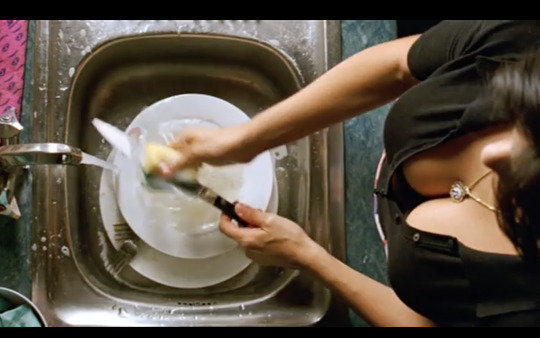
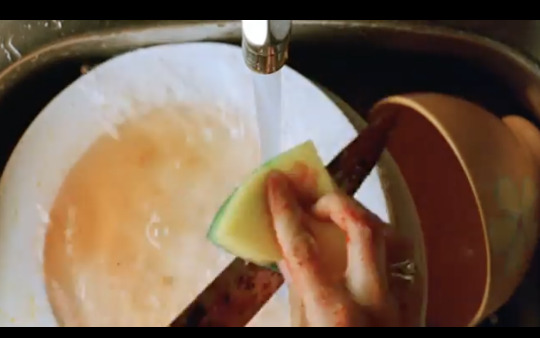
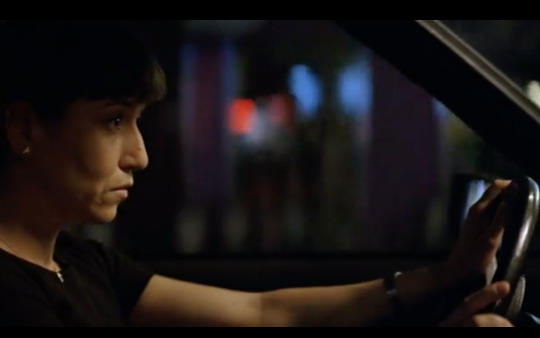
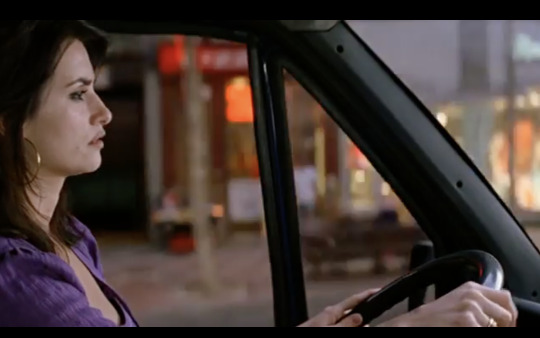
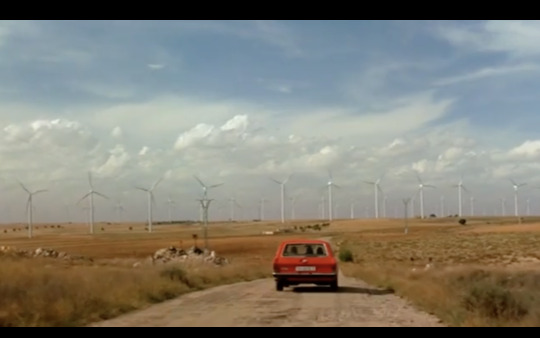
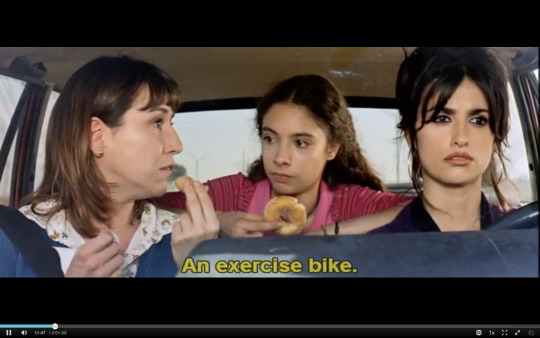

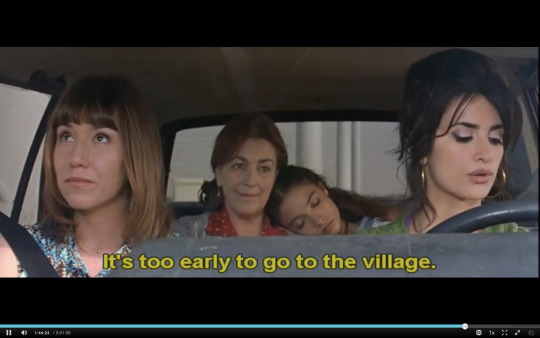

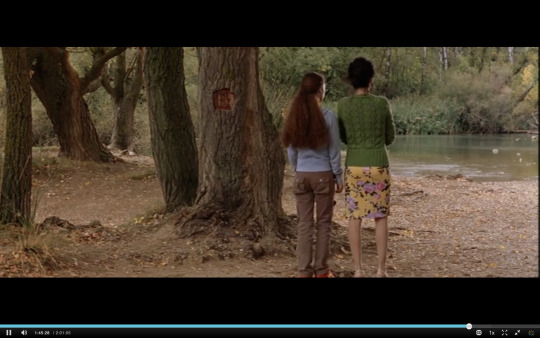
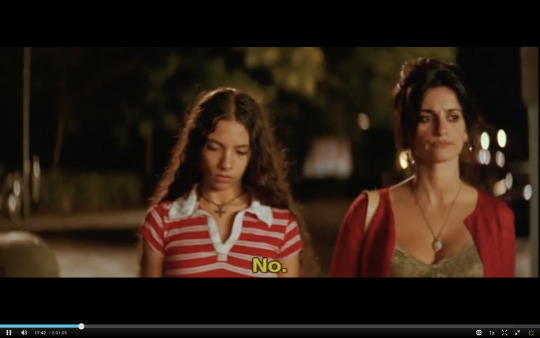
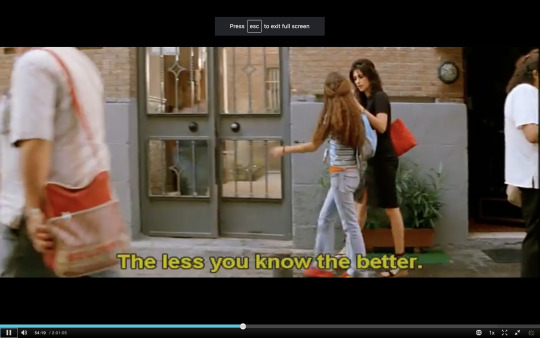
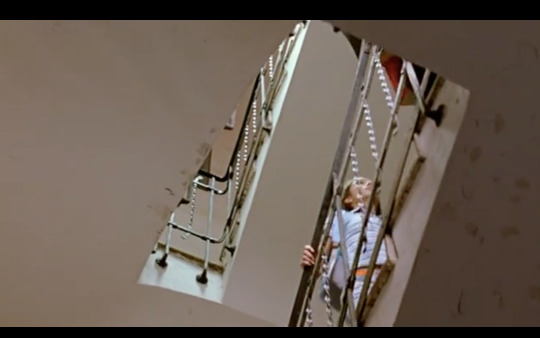
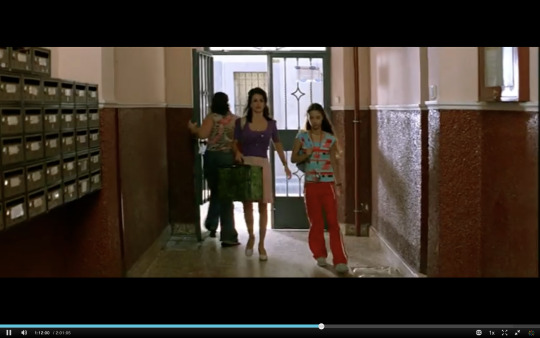
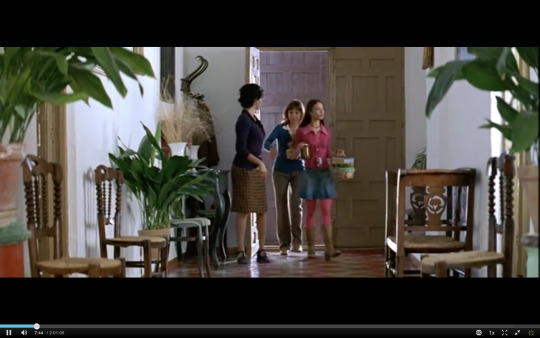

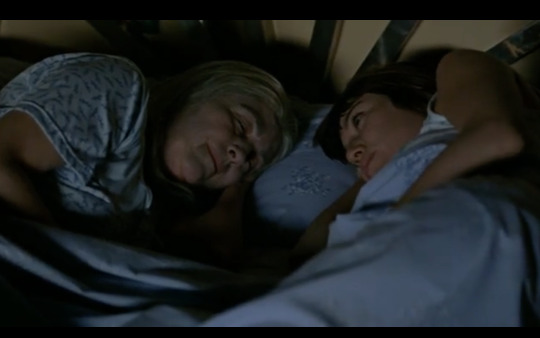


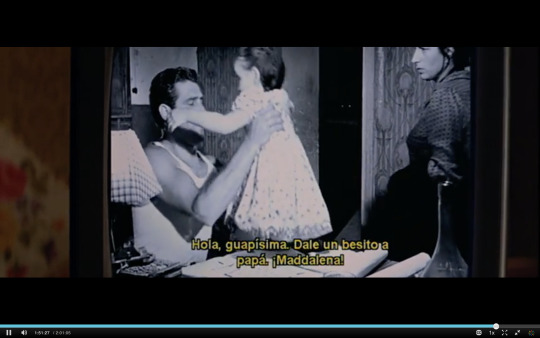
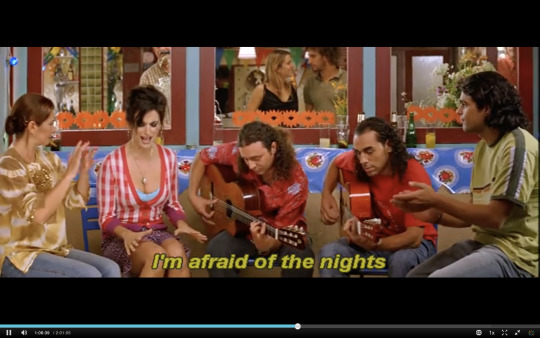
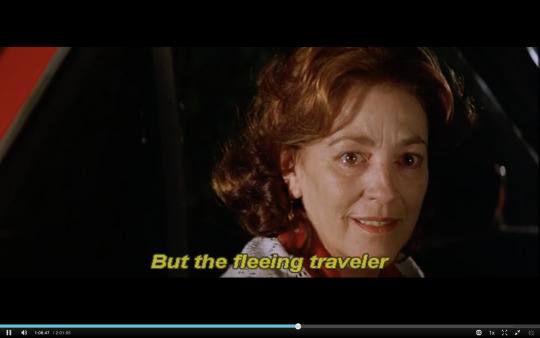
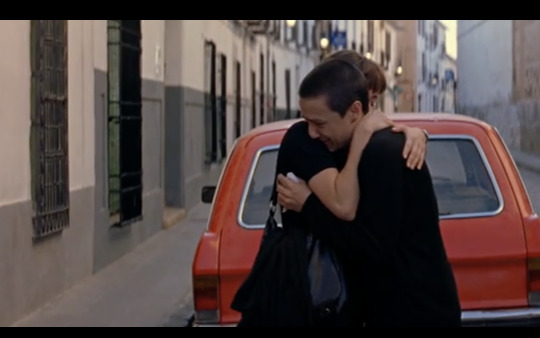
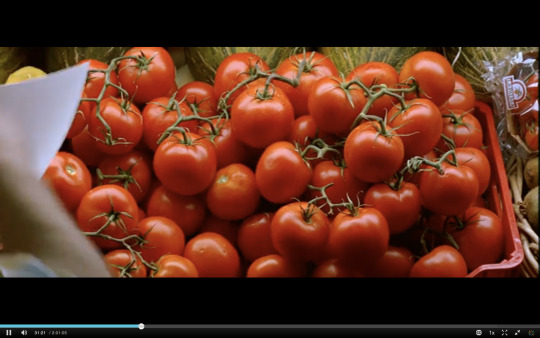
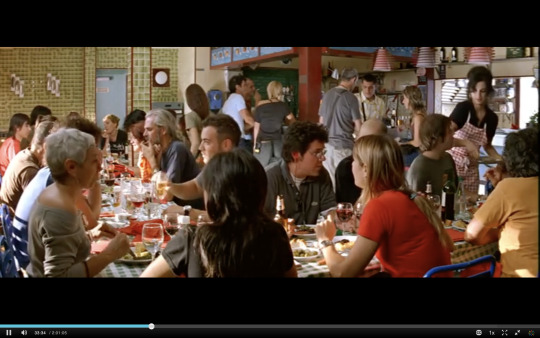
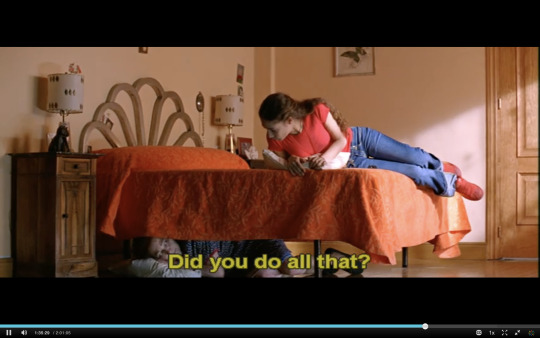
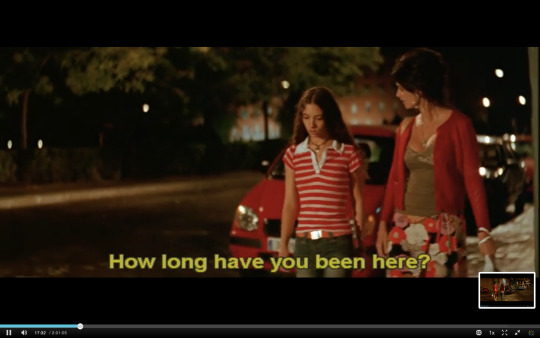
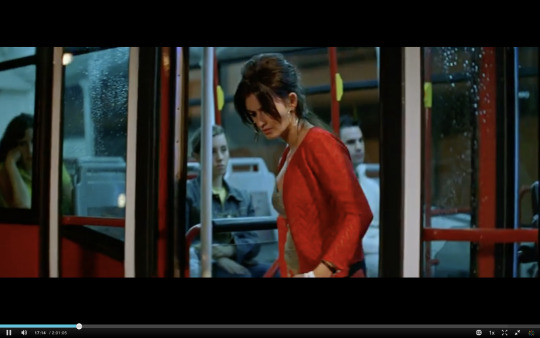
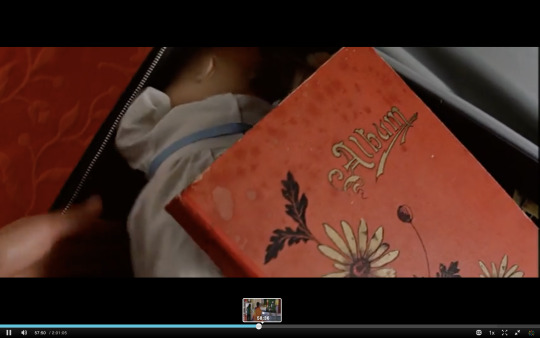
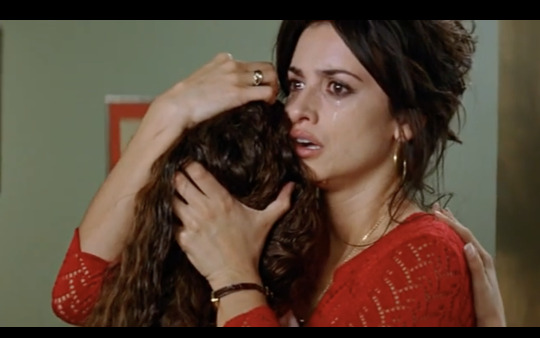
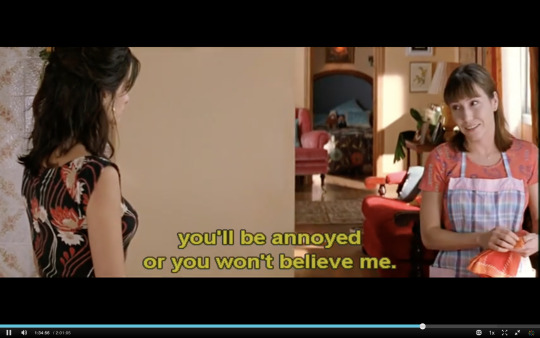
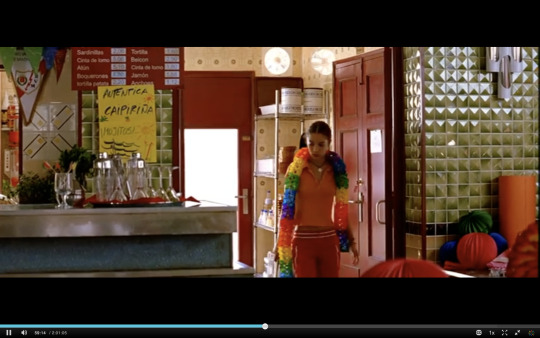
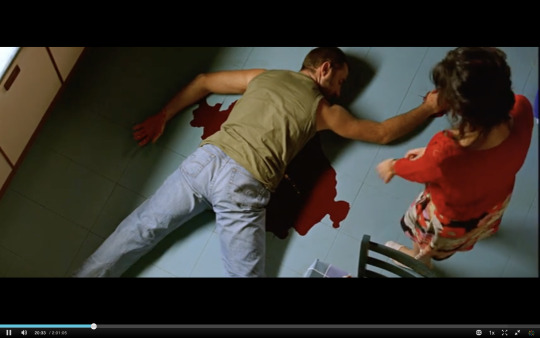
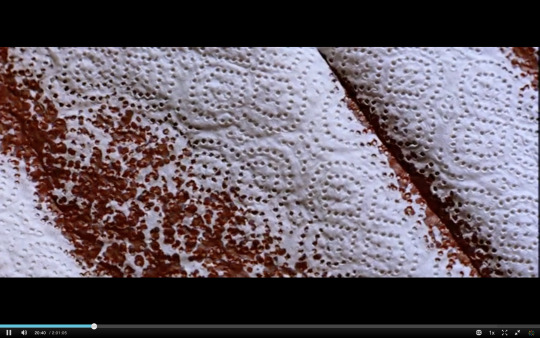
---------------------------------------------------------------------------------------
References
Merin, Jennifer. “Jennifer Merin Interviews Pedro Almodovar Re ‘Volver.’” ALLIANCE OF WOMEN FILM JOURNALISTS, 13 Dec. 2006, awfj.org/blog/2006/12/13/jennifer-merin-interviews-pedro-almodovar-re-volver/.
Team, Amuse. “A Musical Tour of Ibiza.” Amuse, 24 Mar. 2021, amuse.vice.com/en_us/article/bvg3p4/a-musical-tour-of-ibiza.
Lester, Paul Martin. Visual Communication: Images with Messages. Sixth ed., Michael Rosenberg, 2014.
Almodóvar, Pedro, Agustin Almodóvar, Esther García, Penélope Cruz, Carmen Maura, Lola Dueñas, Blanca Portillo, Yohana Cobo, Chus Lampreave, Antonio . Torre, Carlos Blanco, José L. Alcaine, and Alberto Iglesias. Volver. , 2006.
20 notes
·
View notes
Text

The Only Good Indians. By Stephen Graham Jones. New York: Little, Brown Books, 2017.
Rating: 3.5/5 stars
Genre: literary fiction, horror (?)
Part of a Series? No
Summary: The creeping horror of Paul Tremblay meets Tommy Orange’s There There in a dark novel of revenge, cultural identity, and the cost of breaking from tradition in this latest novel from the Jordan Peele of horror literature, Stephen Graham Jones. Seamlessly blending classic horror and a dramatic narrative with sharp social commentary, The Only Good Indians follows four American Indian men after a disturbing event from their youth puts them in a desperate struggle for their lives. Tracked by an entity bent on revenge, these childhood friends are helpless as the culture and traditions they left behind catch up to them in a violent, vengeful way.
***Full review under the cut.***
Content Warnings: blood, gore, animal death, violence
Overview: A friend who teaches horror fiction at the college level recommended this book to me, and I had fairly high expectations. I love a creepy novel, and I was looking forward to an Indigenous horror story that played with some of the tropes I was accustomed to seeing. Unfortunately for me, I had mixed feelings when I turned the final page. While some scenes were definitely evocative, and I liked some of the imagery, I ultimately wanted more of a sense of dread. I also found Jones’s prose style to be hit or miss (depending on the section), so as a result, this book is a 3-star read for me. Readers who enjoy horror, however, might like this a little more than I did. I’m admittedly a little picky when it comes to the genre.
Writing: Jones’s prose seemed to work really well for me at times and really hold me back at others. Especially towards the beginning, I personally found it hard to follow, in part because it felt like Jones was using a lot of slang I didn’t understand along with some unclear syntax here and there. There were also some sentences that felt like they were rambling, and while I think Jones was going for was a kind of laid-back style that imitates speech patterns, and that may work for some, it didn’t always work for me.
There were moments, however, when the laid-back style really set the mood of a particular scene. I think Jones’s rambling sentences and casual tone helped illustrate what life feels like for characters struggling not to become Native stereotypes, and I liked seeing the characters in their day-to-day lives (before the horror happens).
There were moments in these types of scenes, however, where I felt like Jones relied on a lot of telling over showing. Sometimes, Jones describes a character or object or event and then he’ll give a sentence or two of backstory or explain the significance of the thing, or else reference something that happens off-page or in the past, and it felt like I was being asked to absorb that significance right away so that the events in the moment had more meaning. I understand that a lot of these references are meant to evoke a kind of lived experience or “realistic” vibe, and overall, it wasn’t an overwhelming problem. I just happened to notice some sentences here and there.
Plot: This book primarily follows four friends as they are “hunted” down by a vengeful elk spirit (?). Without giving anything away, I will say that I didn’t quite feel an overwhelming sense of dread while reading, and I think it’s because I didn’t feel the psychological impact of the horror or past event. While characters were definitely affected by creepy images and phenomena, and there were probably some cultural implications that went over my head, I ultimately didn’t feel like the characters were mentally or psychologically affected by what happened in the past. Maybe I could say something about Lewis’ paranoia - and indeed, I think that was well done. But the others... not so much.
I also think the pacing felt a little off, and events didn’t really build on one another. While I did like reading about the characters’ everyday lives, it ultimately felt like I was reading literary fiction punctuated by a gory scene here and there. I’m picky about my horror, though, so this criticism might be personal preference. As a piece of literary fiction, this book would have absolutely worked for me. As horror, not so much.
Aside from that, there were moments where I thought characters ended up in situations or did certain things that weren’t wholly believable, and it made me think that Jones was writing them so plot things could happen. For example, in part two, Cass’s girlfriend, Jo, is hiding under the truck for some reason (did she see the elk spirit? We don’t actually know), and doesn’t come out when she hears Cass and Gabe fighting. She needs to be under the truck for something to happen (which I won’t spoil), and it just felt odd to me.
Characters: This book primarily follows 4 characters’ POV: Lewis (in part one), Gabe and Cass (part two), and Gabe’s daughter, Denorah (part 3). Personally, I found the character studies (rather than the horror plot) to be the best parts of this book.
Lewis is interesting in that he’s left the reservation and tried to make a life for himself with a white woman. I liked that he had his quirks - he liked to read trashy fantasy novels and worked on his motorcycle a lot - and I liked that his paranoia about the elk spirit created a kind of tension in the narrative. While reading his perspective, I wasn’t sure if the elk spirit was literal or something Lewis made up to symbolize his guilt, and I think Jones did a good job showing that Lewis’s paranoia made him think and act in strange ways.
Gabe and Cass are also well-developed in that they have their own lives on the reservation, but struggle to keep their head above water, so to speak. I appreciated getting a glimpse into what challenges they faced and how some of those challenges come from a clash between “traditional” and “modern/contemporary” culture. While I didn’t quite find Gabe and Cass as interesting as Lewis (in part because they barely remember the event from the past that triggers this whole “vengeful elk spirit” plot), they weren’t bad characters by any means. I liked Cass’s focus on horses and his plans for a future with Jo; and I also liked Gabe’s complicated relationship with his daughter.
Denorah was sympathetic in that she had some very clear goals for her life, and as a reader, I wanted very much for her to achieve those goals. She loves basketball, and readers can see that in the way she acts and thinks. But as much as I liked Denorah, I think her section (part 3) tended to drag out a little bit, perhaps because Denorah comes face-to-face with the elk spirit and the spirit’s vengeance felt a little misdirected. I also think the book as a whole ended somewhat abruptly; because the book ends with Denorah, I wanted a little more from her, like a commentary on the past and how she takes the pain of the past and uses it to move forward. Instead, it felt a little like a bunch of bad things happened at random, and there wasn’t much of a “lesson” (not that books need them, but I’m picky about my horror - I like the scary things to comment on something).
Supporting characters such as Lewis’s wife (Peta), Lewis’s coworker (Shaney), Cass’s girlfriend (Jo), etc. were likewise well-written and seemed complex. I don’t have much to say about them without giving away plot points, but I do think they served their purposes.
The elk spirit was... complicated. As a character, I didn’t really connect with her, despite Jones writing a couple of chapters from her POV. While I understand the desire for vengeance, I didn’t really feel it in my bones, so all the violence in the book that the spirit commits feels random and superficial. I think I would have connected with the spirit more if Jones had included more passages from her POV, getting us to empathize with her pain a little more or at least providing some kind of commentary on the rights of nature or something. But this might be personal preference, so take this criticism with a grain of salt.
TL;DR: Despite a lack of dread or suspense, The Only Good Indians is a welcome addition to the horror genre, using spooky, disturbing imagery to underline the struggle of four Blackfeet characters trying to make a life for themselves. While die-hard horror fans might find this book lacking, Jones’s novel will absolutely appeal to literary fiction readers, as the character studies are the strongest and most compelling parts of the book.
3 notes
·
View notes
Text
Pokémon Sword & Shield Reviews are in! ⚔️ 🛡

Areajugones - Ramón Baylos
Score: 8.8 / 10
The new Game Freak game will please both newcomers and more experienced players because, although some sections of this new installment have received less polish, it still has attractive enough content for every trainer to find his place in the new region of Galar.
Gamespot - Kallie Plagge
Score: 90 / 100
In collecting, battling, and exploring, Sword and Shield cut out the bloat and focus on what makes these pillars of the Pokemon games so captivating in the first place. You're not held back by overly complicated back-end systems or hoops to jump through; from the outset, you can start wandering the Galar region, seeing its new Pokemon, and trying out its new battle strategies with very little in your way. This leaves you free to enjoy what Pokemon is all about, and that makes for an incredibly strong showing for the series' proper debut on Switch.
Gamesradar - Sam Loveridge
Score: 90 / 100
Gameplay tweaks and attention to detail make Pokemon Sword and Shield the most compelling Pokemon world to date!
EGM - Ray Carsillo
Score: 80 / 100
The first new-generation Pokémon game to release on a proper home console does not disappoint. New features like Dynamaxing and the Wild Area are fun additions that make the experience of becoming a Pokémon champion still feel fresh. It’s just a shame that Game Freak didn’t lean into the new features more than they did.
Nintendo Life - Alex Olney
Score: 8 / 10
Pokémon Sword and Shield succeded in bringing some new ideas to the table, but they also somewhat guilty of not pushing things far enough. What’s done right is done right, but what is done wrong feels like it’s come from a decade old design document. There are moments contained within that are best the series has ever been, but the joy is at times spoiled by contrasting moments that left us disappointed and did not match up to the rest of what these games can offer. What we’ve got here is an experience filled with highs and lows, from the unadulterated wonder and joy of seeing brand new Pokémon in a stadium full of cheering crowds, to the monotonous and dragging out dialogue we want to skip.
Ars Technica - Andrew Cunningham
Unscored
The short version of this review is that Sword and Shield are fun, good-looking Pokémon games with a solid story mode and some welcome changes to the game’s mechanics.
Daily Star - Dom Peppiatt
Score: 3 / 5 stars
Pokémon Sword and Shield are not bad games. But fun character arcs and inventive, creative designs of new ‘mon are often offset by poor pacing and restrictive world design.The world of Galar is charming, and is a Pokémon interpretation of Britain I’ve dreamed of since I was a kid, but between gating what Pokémon you can catch behind Gym Badges, some half-baked route/City designs and a modest amount of post-game content, Sword and Shield can only be called ‘good’ Pokémon games… not ‘great’ ones.
Eurogamer - Chris Tapsell
Unscored
Pokémon Sword and Shield add some brilliant new creatures, but like their gargantuan Dynamax forms, the games feel like a hollow projection.
Game Informer - Brian Shea
Score: 8.8 / 10
The compelling formula of simultaneously building your collections of monsters and gym badges has proven timeless, but the new additions and enhancements show Pokémon isn't done evolving.
GameSpot - Kallie Plagge
Score: 9 / 10
Pokemon Sword and Shield scale down the bloated elements of the series while improving what really matters, making for the best new generation in years.
GameXplain
Score: liked
Video Review - Quote not available
Gameblog - Julien Inverno
Score: 7 / 10
With these new games Pokémon, Game Freak proceeds as usual in the evolution of the series, small touches, all the more welcome this time they seem absolutely necessary today, like the boxes PC accessible everywhere. Without major disruption but with significant improvements, in terms of game comfort mainly, and while some will probably deplore the reduced number of Pokémon referenced base in the Pokédex Galar, new region that enjoys a care of atmosphere and staging undeniable, Pokémon remains faithful to its formula still winning for over twenty years, at the risk of missing the evolutionary step offered and hoped for by its convergence with the so popular Nintendo Switch. That said, the proposal is still effective for those for whom risk taking is secondary and of course the newcomers, especially children, the first public concerned and whose generations succeed and always succumb to the charm of those offered over the years by Pokémon.
GamesRadar+ - Sam Loveridge
Score: 4.5 / 5 stars
Gameplay tweaks and attention to detail make Pokemon Sword and Shield the most compelling Pokemon world to date.
IGN - Casey DeFreitas
Score: 9.3 / 10
Pokémon Sword and Shield are the best games in the series, streamlining its most tedious traditions without losing any of the charm.
Kotaku - Gita Jackson
Unscored
The magic of Pokémon is that it lets you tap into a sense of wonder that becomes more and more difficult to access as an adult. Sword and Shield do that more successfully than any Pokémon release has in years. It won’t be everything to everyone, and it will not make everyone happy. I’m not sure it needs to. It’s a portal to a new world.
Metro GameCentral
Score: 7 / 10
The furore over Dexit may be overblown but even without it this is an underwhelming and unambitious attempt to modernise Pokémon and expand its horizons.
Polygon - Nicole Carpenter
Unscored
The surprise in Sword and Shield is that I’m still finding things that surprise me, even after putting in so many hours. It’s in how Game Freak has made a linear game feel so much less linear.
VG247 - Alex Donaldson
Score: 3 / 5 stars
Pokémon Sword & Shield is all too often a bit disappointing, and in some places actually feels a little unfinished, but it also fully provides that warm, fuzzy feeling that one expects from the series. Crucially, even through frustration, never once did I think about putting it down, which is to its credit. It comes recommended almost for the Galar setting and new Pokemon alone, but with a long list of caveats indeed.
JeuxVideo - L'avis de Kaaraj (French)
Score: 80 / 100
Pokémon Sword / Shield is offered some new very appreciable. Its artistically beautiful world, its more pronounced work on the realization, but also its new generation of Pokémon as well as several additions like the presence of a last part slightly reworked compared to the precedents make it a convincing opus. Its still very classic structure, its overall lack of difficulty and its technical shortcomings - aliasing in docked mode, clipping - however prevent it from claiming the status of unavoidable. The model of the wild lands and faults present there, however, brings a real good idea to the certain potential for the rest of the series, which we hope to see return in the next games.
Everyeye.i - Francesco "Cydonia" Cilurzo (French)
Score: 85 / 100
Pokémon Sword and Shield are complex and convincing games: a solid plot, a more varied gameplay and a very thoughtfully-created level design are the hallmarks of this new pokémon generation.
#seems like pretty fair scores to me#pokemon sword and shield#pokemon sword#pokemon shield#pokemon sword and pokemon shield#pokemon swsh#pokemon#nintendo#gaming#Game Freak#pokémon
636 notes
·
View notes
Text
So I beat RE:8
And overall I SUPER enjoyed this game. I loved how it was an homage to the series to date. Castle Dimitrescu made me feel like I was back in the OG Resident Evil stealth-crawling my way through dungeons and puzzles and hoping not to get caught by the enemies. Lady Dimitrescu stalking you as you scramble to gather pieces of a puzzle to escape harkened back to the Tyrant in RE:2 chasing you around RPD HQ. Her daughters’ blow fly entrances were sincerely spine-tingling, and I was on the edge of my seat with each new door opened wondering if they’d found me yet. This level was truly a standout of the game.
The Beneviento House may actually have been my favorite, seeing as it was such a departure from the rest of the game without the use of weapons and having to rely on running and hiding to survive. I was at my most terrified and unsettled in that level dissecting doll!Mia and running from the baby creature in a way I didn’t feel throughout the rest of the game. It was so creepy and so tense, and the juxtaposition with the rest of the game really made it shine imo.
The Reservoir was probably my least favorite part. It felt too much like the action-y RE:6 against the boss, lots of cheap one-hit kill events that relied on timing, etc. It was the part where I died the most, whereas throughout the rest of the game I died maybe twice or three times.
Heisenberg’s factory was pretty scary and adrenaline-inducing fighting those awful chainsaw guys. Hot take: RE:5 was a great game and a lot of this level reminded me of the better parts of that game wrt the enemies and mowing them down. The layout was super cool, the fan guy was hilariously scary stalking you, and Heisenberg was as grandiose (and verbose) as Wesker once was back in the old days. I loved the molding puzzles, how the enemies would tear down walls to open new areas to explore, and the backtracking to explore it all once you had certain items in your possession.
Lastly, the Duke was an awesome character. Thanks for that fun call-back to RE:4′s shopkeeper, and most importantly for being an actual character whose presence was plot-relevant and even integral at times. He was charming and a thoughtful addition to the experience. All the voice acting was incredible, but I think the Duke and Lady Dimitrescu and Mia were standouts.
What I didn’t like... This game has a woman problem like whoa. When all your women exist either as damseled plot devices with no agency whatsoever, vehicles for manpain/revenge, and their main “nuance” is related to motherhood or seeking a mother-daughter relationship (because, you know, women be mothering), then you have a problem. A second hot take: Mia should have been the protagonist. She had training way before Ethan ever did, was in the know more than him, and wasn’t dead the whole time (sidebar: what the literal fuck is this plot contrivance). This game has shown us two kinds of women: either they are good mothers/daughters who eschew all else in favor of that relationship and stay in their lane (Mia and Rose, an agency-less baby and McGuffin), or they are corruptions of that role (i.e., Miranda selfishly killing everyone to get Eve back or Donna selfishly killing everyone to get a new mother a-la RE:7′s Eveline). Even the Dimitrescu ladies were almost entirely defined by their mother/daughter status, in Lady Dimitrescu’s case both. Is there truly no other motivation or nuance available to women in this universe??? 🙃🙃🙃
Mentioned before but worth repeating: Ethan was dead the whole time?! What a shitty contrivance. I mean, fine, but I didn’t like it at all. Another nit-picky thing that broke my suspension of disbelief: Alcina cuts his hand off and the magic herb chemicals that act as health in the game can reattach it... But they can’t regrow his fucking fingers??? What is consistency. 🙃
Heisenberg’s boss fight was dumb. There was no terror, very low stakes, and it felt like the worst of RE:6 action. It even had a gimmicky cinematic final shot that reminded me of those awful quick-time events. He was laughably easy to kill and held none of the dread of, say, Lady Dimitrescu’s daughers or the entirety of the Beneviento House. I don’t knock it as much because the rest of the Factory level was fabulous. The boss fight with the Fan Man was superb, scary, and tough, as well as “good” gimmicky. Unfortunately, Heisenberg’s final boss fight was the beginning of the end.
Chris finally tells us the truth through some truly excruciating exposition scenes, and like the NPCs who question his choices, I too was questioning him. Because his logic was super dumb. Why not tell Ethan to begin with? More on this below.
Mother Miranda was incredibly underwhelming as a boss. Chris’s part in the story was more over the top action, which is cool and fun if you like that (not really my thing, personally, but I can see why it could work for others). But Mother Miranda herself was a disappointment. I think the main reason was because we had almost no relationship with her. She was just a name who maybe is responsible for our McGuffin daughter being taken, but it never felt personal. Yeah, she can shape shift and we met her as the hag, but since we didn’t know that, the relationship aspect was never there/built upon. She felt like a random final boss with little skin in the game compared to, say, Heisenberg, who we actually did get to know more as we went along and maybe felt more complicated feelings toward in killing him.
This game could have been better if a few changes had been made.
1. Mia should have been the protagonist/deuteragonist. If we are truly supposed to be convinced by Chris’ stupid logic that Ethan cannot handle the truth, then why not make Mia the protagonist or even a secondary protagonist? Ethan and Mia could have both been working toward their goals with different information, similar to the situation in RE:7 toward the end of that game. Chris wouldn’t know Mia is alive, but she could be working against Mother Miranda directly while being experimented on/held captive. Ethan could do the main story that we got, while Mia sees a different side of the world digging deeper into Mother Miranda’s backstory and motivations, which would serve to flesh out her character (beyond the lazy corrupted motherhood narrative), touch on the relationship to Spencer and Umbrella Corp, etc. Ethan facing Miranda at the end, thus, would have felt super personal and significant having that emotional development through Mia. And Mia herself could be fleshed out more as a character beyond her role as wife and mother.
2. Bela, Daniela, and Cassandra deserved more, and Castle Dimitrescu should have been a longer arc. The daughters were killed pretty fast. I couldn’t name a single differentiating characteristic between them, which is a problem. And I wanted to know more! We got a little info about the experiments they endured. I wanted to feel like killing at least one of them was very personal and meant something (if we only got one of them really fleshed out, I mean. That would still be one more than we got.). This section could have been longer and benefited from it. Exploring that castle was so fun and I wanted more time there. Also, I’m gonna say it: the Reservoir could have been cut entirely and that time given to Castle Dimitrescu for three sub-bosses before Mother Miranda. Problem solved.
3. Chis could have had a more story-related role. Why not more cutscenes with Chris investigating/chasing Miranda to give us a buildup of breadcrumbs and foreshadowing to the final reveal in the end? Rather than an exposition dump?? This would be related to my point #1 in making Miranda feel more connected to the story as the big bad. We wouldn’t even have to play as Chris if we just got some cutscenes showing his team’s progress hunting Miranda, learning more about her, etc. Imagine if we got secondary protagonist Mia’s story with Chris in there alongside her, unknowing that she’s alive and yet affecting her progress or vice versa as they both hunt Miranda? So much potential there. Where is the fanfiction???
4. Sheva??? I know it’s just me but I mean... The BSAA coming in to help/fuck everything up could have been a great opportunity for a cameo from Sheva to reunite very briefly with Chris (and set up the next one??? When though.). Yeah, I’m RE:5 trash, okay. But she was a great character and I wish we could see her at ALL in any other games even as a cameo.
My final takeaway here is that I enjoyed this game immensely as a total experience. I’m already doing a New Game Plus on the Village of Shadows difficulty, so pray for me. I love the exploration and puzzling aspect, the combat is intense but not overwhelmingly action-y like RE:6 was, and I love the atmosphere of this game. I recommend it to anyone who likes survival horror. It’s not without its faults, and I really wish the RE team would hire some women for their writers’ room, but I’m still very happy with the end result overall.
#major spoilers for re8#don't read this if you care about that#my personal review of the game#just my thoughts as i played through it#re:8
3 notes
·
View notes
Text
Thoughts on how the Star Trek remakes should approach the characters , in a way that I think would be realistic for 2021 and our current climate:
Romantic relationships:
Sulu/Chekhov - We know they spend a lot of time together on a one to one basis, especially in the films, and they are very endeared to each other. It also wouldn’t change their dynamic or the dynamic on the bridge, and could slip into any future films or shows without change to character. (unlike Spock and Uhura, which I don’t hate, but required adjusting Spock’s character in order to enable a pre-existing relationship.) Like, all you’d need is one throwaway line to make it canon and you could keep the rest exactly the same. And there is obvious value in representing an interracial same sex relationship.
Uhura/Scotty - this would work as a slow burn, because Scotty is a bit of a hopeless romantic whilst he is younger, and is easily misled by his heart and can be a bit overprotective in a very 60s style which is a character flaw integral to his character (and is the plot of a few episodes). Which is why a slow burn is nice for him, because he needs to learn to come from a place of genuine respect and deep affection. And whilst I do like that Uhura stays relatively unattached as one of the few prominent female characters in tos, I do think that as a black woman it is important to allow her to have a romantic relationship due to current representation issues. Which is why I think the slow burn is also nice for her, because you can’t change her character, or make her the object of affection, but showing a deep love and affection developing on the job is nice. We also only start getting the scotty/Uhura romantic dynamic coming in the films when they’re much older. And again I think this is one you can show without having to change anything integral to them. Same with checkov/sulu that it shouldn’t be a plot point, but a character thing that happens without needing to be focused on. Neither of them seek it, but it happens naturally.
Amanda/Sarek - obviously this is already canon, but I think it should be explored in a little more detail. I also think we can do away with the whole “Vulcan is incredibly sexist and treat women as property” thing, which doesn’t actually make sense considering the female Vulcans we do meet, so doesn’t really add to the world building anyway.
Ambiguous Relationships:
Kirk/Spock/Bones - now I know this is controversial, but I don’t think they should necessarily make them canon in the remakes, except possibly at the very end of the shows/last film. To focus on the romantic relationship between Kirk/Spock too early on will potentially reduce the time for Bones to be included as a very necessary part of the main three, and the fact of the matter, the three of them are presented as having a deep bond, not just Kirk/Spock. And there’s a certain level of yearning and unspoken love that really defines their relationships. They should always end up together in some manner, with no other romantic attachments. Part of me would love to make it a ployamarous relationship, but I don’t think it’s likely to happen anytime soon.
I do think however that they should make Spock gay, and I think they should keep the relationship with the Romulan commander but make it a man, because that was actually very well written and acted, but the fact that Spock is able to use that romantic affection to his advantage against a woman is a little sexist considering it’s like the only time we see a female romulan commander, but as a man we wouldn’t have those same issues. And I think that’s the only other relationship we should see Spock have outside of Kirk/bones, because it’s marked by the fact that he can’t act on it the way he would like to, and none of the other relationships in tos really work IMO because it just seems ooc for him. But I think it’s important to allow him to be confirmed as gay considering he is queercoded.
I don’t think it’ll be as easy to confirm a queer identity for Kirk, but I think that for the women he has flings with, he should never be the one to initiate it, but have the same flaw of scotty as being a bit of a hopeless romantic who can be misled by his heart, and again that would give more value to the slow burn he has with Spock. I think you can very much allow him to refer to Spock with love, and I think you can confirm a relationship with Spock at the very end, but I think it should be non-sexual. Vulcan kisses are the way to go, and should allow you to give confirmation of romantic love whilst also having plausible deniability for the people who would riot against it.
I think it’d be fucking amazing if we could cast a trans guy as Kirk. I don’t think you’d get away with saying the character is trans, but having a trans actor and just never mentioning it in show may just be enough to get away with it. Especially if this is a relatively unknown actor who passes completely so casual watchers can’t even get fussed about it (I know this wording has some issues, but I’m thinking more about getting around execs and producers, than on what would be best for rep.)
I’m torn on how far you could get away with including Bones in their relationship. The bones/Spock dynamic is interesting because it is like enemies to lovers, they definitely develop that care for each other, whilst Kirk/bones are old friends. I think Bones shouldn’t have romantic relationships on screen, and should maybe be quite unromantic as a result of his divorce. I don’t think we should ever meet his daughter, though I’m also quite interested in the idea of his ex wife having remarried for a number of years and then having a brief affair with Bones, before breaking it off, but then gives birth to his child but it remains a secret. Because it’s definitely part of his character that he has no attachments to his home, and it makes more sense of his attachment - his love for a daughter that never knew him - if it’s one he can’t do anything about. And would understandably make him more bitter towards his ex, which can make him more unromantic. But I don’t think it needs to be a major plot point.
Like I said, Spock/bones/Kirk should always end up together in some way. And I think it’s in their character to never define why they end up together, but to acknowledge that they can’t live without each other. And I think you could get away with including that as ambiguous to how far their love for each other goes. There’ll be too much backlash to make it completely canon for it, but you could get away with the Good Omens approach. Perhaps you could include Bones in a Vulcan kiss subtly enough to get away with it.
Characters who should be important:
Christine Chapel - she should definitely be in it and made a more significant character, because otherwise Uhura is really the only woman in the show. But it’d be very nice to have a woman who doesn’t need to have a relationship, and there’s no need for her romantic desire for Spock to exist in any remakes. It would also be nice to just make her a doctor from the get-go. Her friendship with Uhura was present in tos, but can now be focused on more, as well as her supportive role to Bones throughout. She wouldn’t be part of the main group, but she should be a big part of their lives.
Doctor m’benga - he was an interesting character, and it’d be nice to have a fixed medical team that work closely together. There’s also a potential for an interesting concept of him being an expert on Vulcans, Bones being an expert on Humans, and thus they’ve both been hired on the ship to work together for the sake of Spock. Also, having another established doctor on board could give an actual explanation for why it’s okay that their only doctor keeps beaming down to dangerous missions and going up to the bridge for no reason lol. Plus there is a lot to be said for casting a dark skinned black man in the role of knowledgable caregiver, especially if they can make him more of a scientist of alien biology too. There may be value if it naturally develops of him having a relationship with chapel, because whilst I like allowing women to exist without relationships, it might be balanced out with the positive representation of an interracial relationship.
Lieutenant Rahda - remember her? She was like In one episode but was great, and she should definitely be introduced as part of the bridge team again. Though her exact culture or religion is not disclosed, she is seen to wear a bindi, and i think it’s always a great time to add more diversity. It makes sense to have more people in the bridge crew too, even if they aren’t part of the main team dynamic. Considering the current political climate, it’d also be a great idea to add another bridge crew team who is visibly a Muslim woman who wears a headscarf, seeing as various countries are still trying to ban that.
Walking Bear - he was only in the TAS for one episode, but again I think he would prove a valuable addition, especially considering star trek’s representation of native people has never been the best, so it’s time they started to make up for that a bit. In most episodes there’s always usually others in the bridge that are helping the main team, and it’d make sense to have a fixed cast of who these people are and flesh them out a bit more.
Saavik - she shouldn’t be in it until much later, at least not as part of the enterprise crew, but there is something very interesting about her character and the dynamic with Spock (which is why I think they should meet later on, because he takes on a role of mentor which is a dynamic shift, and thus should probably happen later. Multiple Vulcans on board is also a dynamic shift that I think should be addressed more.) I do wonder whether it might be nice to move her to being a scientist rather than bridge crew, as that would afford her more interaction with Bones as well, who I think we should get to see interact with other Vulcans more, to establish that he is not xenophobic despite his conflict on Vulcan philosophy with Spock. (Or at least if he does start xenophobic, to start showing his development away from this.) She also should not have a relationship, especially not with Spock oh my god. I think a nice way for her to be introduced would be if she was staffed on a Vulcan only ship that the enterprise for whatever reason has to work alongside, because I think we need to see Spock interact more with other Vulcans and see that Vulcans, despite claims to the contrary, can have the same xenophobic failings as humans. I think her being one who is sympathetic to the enterprise and to Spock is a nice set up to them then meeting later and working together (and also why she might change careers and move away from the Vulcan only ships, as we do get the sense it is unusual for Vulcans to serve on board a starship.) Whilst I do think that a romulan/Vulcan offspring could provide an interesting story, I think she should be fully Vulcan in order to make her acceptance of Spock more poignant.
Kevin Riley - I just think he’s neat. Also maybe we can return to the Tarsus 5 colony story point?!?!?!?
I’d also think it’d be cool to establish some engineers that work beneath Scotty, and a mix of genders of course.
But yeah, I think there’s a lot of ways that any remakes could stay true to the original, whilst still pushing for progressiveness in the same spirit as tos, whilst managing to manoeuvre around execs and producers and negative media. Star Trek should always be progressive for its day, and it’s a new day now, so we need to keep moving onwards.
3 notes
·
View notes
Text
Devil's Advocate (part 1)
I want to do good to the characters that are often ostracized in the LiS community. Even though my "clients" have some serious personality drawbacks that have, for some reason, caused an overreaction from certain people who completed the original game, I believe that they don't deserve the hate they get and I will try to prove it to the jury by taking a methodical, analytical approach.
Defendant 1: Brooke Scott

It is safe to say that this student is treated with a lot of negativity by the community, and it's not hard to see why. Brooke is one of the characters that directly challenges Max's interests (although some of the members which are focused too much on the relationship between the protagonist and Chloe Price tend to not care about her or Warren at all, which will be addressed later) and shows certain jealousy in case things don't go her way, she is prone to judge people by their intellectual abilities and is seen by many as a rude and bitter person. While some of these accusations are in some way true, I would like to address some facts that the "haters" tend to forget.
As far as I'm concerned, there are only two characters who regret their actions aimed against the interests of Max Caulfield (I'm talking about significant plot points) — Nathan Prescott and Brooke Scott. While the first enjoys his popularity and is totally forgiven for his rude and aggressive behaviour due to his mental condition and abuse, which I don't intend to challenge, Brooke's character arc which ends with the act of apology for Scott's own behaviour, is being totally ignored. To be precise, this could only occur if you choose to go on a movie night with Warren, because only then Brooke has a chance to escape her obsession and achieve the true state of affairs through self-analysis, but this further proves that she just can't control her feelings towards Warren.
Your honour, my client is obviously an introvert, and evidence shows that Warren doesn't seem to be noticing her in many situations, even though they both are on good terms with each other. Such people tend to accumulate stress and sometimes change the way they interact with people completely without any obvious reason. Having ended up in a seemingly hopeless love triangle, she acts unnaturally territorial, but this behaviour doesn't mean that Brooke is an evil and selfish character per se, since we can see that in a situation, where she feels comfortable, Scott acts bravely enough to apologize before Max the first time she meets her after the movie night.
Brooke still stays amongst the most unexplored characters in the fandom due to the community's biased and one-sided attitude. She has a lot of potential to become a great addition to the world of fanfiction. I hope that my little analysis helped you to discover a different perspective and hope that we will enjoy more fan made content involving Brooke Scott.
29 notes
·
View notes